CS 261: Research Topics in Operating Systems (2021)
Some links to papers are links to the ACM’s site. You may need to use the Harvard VPN to get access to the papers via those links. Alternate links will be provided.

Meeting 1 (1/26): Overview
Operating system architectures, meeting 2 (1/28): multics and unix.
“Multics—The first seven years” , Corbató FJ, Saltzer JH, and Clingen CT (1972)
“Protection in an information processing utility” , Graham RM (1968)
“The evolution of the Unix time-sharing system” , Ritchie DM (1984)
Additional resources
The Multicians web site for additional information on Multics, including extensive stories and Multics source code.
Technical: The Multics input/output system , Feiertag RJ and Organick EI, for a description of Multics I/O to contrast with Unix I/O.
Unix and Multics , Tom Van Vleck.
… I remarked to Dennis that easily half the code I was writing in Multics was error recovery code. He said, "We left all that stuff out. If there's an error, we have this routine called panic() , and when it is called, the machine crashes, and you holler down the hall, 'Hey, reboot it.'"
The Louisiana State Trooper Story
The IBM 7094 and CTSS
This describes the history of the system that preceded Multics, CTSS (the Compatible Time Sharing System). It also contains one of my favorite stories about the early computing days: “IBM had been very generous to MIT in the fifties and sixties, donating or discounting its biggest scientific computers. When a new top of the line 36-bit scientific machine came out, MIT expected to get one. In the early sixties, the deal was that MIT got one 8-hour shift, all the other New England colleges and universities got a shift, and the third shift was available to IBM for its own use. One use IBM made of its share was yacht handicapping: the President of IBM raced big yachts on Long Island Sound, and these boats were assigned handicap points by a complicated formula. There was a special job deck kept at the MIT Computation Center, and if a request came in to run it, operators were to stop whatever was running on the machine and do the yacht handicapping job immediately.”
Using Ring 5 , Randy Saunders.
"All Multics User functions work in Ring 5." I have that EMail (from Dave Bergum) framed on my wall to this date. … All the documentation clearly states that system software has ring brackets of [1,5,5] so that it runs equally in both rings 4 and 5. However, the PL/I compiler creates segments with ring brackets of [4,4,4] by default. … I found each and every place CNO had fixed a program without resetting the ring brackets correctly. It started out 5 a day, and in 3 months it was down to one a week.”
Bell Systems Technical Journal 57(6) Part 2: Unix Time-sharing System (July–August 1978)
This volume contains some of the first broadly-accessible descriptions of Unix. Individual articles are available on archive.org . As of late January 2021, you can buy a physical copy on Amazon for $2,996. Interesting articles include Thompson on Unix implementation, Ritchie’s retrospective, and several articles on actual applications, especially document preparation.
Meeting 3 (2/2): Microkernels
“The nucleus of a multiprogramming system” , Brinch Hansen P (1970).
“Toward real microkernels” , Liedtke J (1996).
“Are virtual machine monitors microkernels done right?” , Hand S, Warfield A, Fraser K, Kotsovinos E, Magenheimer DJ (2005).
Supplemental reading
“Improving IPC by kernel design” , Liedtke J (1993). Article introducing the first microbenchmark-performant microkernel.
“Are virtual machine monitors microkernels done right?” , Heiser G, Uhlig V, LeVasseur J (2006).
“From L3 to seL4: What have we learnt in 20 years of L4 microkernels?” , Elphinstone K, Heiser G (2013).
Retained: Minimality as key design principle. Replaced: Synchronous IPC augmented with (seL4, NOVA, Fiasco.OC) or replaced by (OKL4) asynchronous notification. Replaced: Physical by virtual message registers. Abandoned: Long IPC. Replaced: Thread IDs by port-like IPC endpoints as message destinations. Abandoned: IPC timeouts in seL4, OKL4. Abandoned: Clans and chiefs. Retained: User-level drivers as a core feature. Abandoned: Hierarchical process management. Multiple approaches: Some L4 kernels retain the model of recursive address-space construc- tion, while seL4 and OKL4 originate mappings from frames. Added: User-level control over kernel memory in seL4, kernel memory quota in Fiasco.OC. Unresolved: Principled, policy-free control of CPU time. Unresolved: Handling of multicore processors in the age of verification. Replaced: Process kernel by event kernel in seL4, OKL4 and NOVA. Abandoned: Virtual TCB addressing. … Abandoned: C++ for seL4 and OKL4.
Meeting 4 (2/4): Exokernels
“Exterminate all operating systems abstractions” , Engler DE, Kaashoek MF (1995).
“Exokernel: an operating system architecture for application-level resource management” , Engler DE, Kaashoek MF, O’Toole J (1995).
“The nonkernel: a kernel designed for the cloud” , Ben-Yehuda M, Peleg O, Ben-Yehuda OA, Smolyar I, Tsafrir D (2013).
“Application performance and flexibility on exokernel systems” , Kaashoek MF, Engler DR, Ganger GR, Briceño HM, Hunt R, Mazières D, Pinckney T, Grimm R, Jannotti J, Mackenzie K (1997).
Particularly worth reading is section 4, Multiplexing Stable Storage, which contains one of the most overcomplicated designs for stable storage imaginable. It’s instructive: if your principles end up here, might there be something wrong with your principles?
“Fast and flexible application-level networking on exokernel systems” , Ganger GR, Engler DE, Kaashoek MF, Briceño HM, Hunt R, Pinckney T (2002).
Particularly worth reading is section 8, Discussion: “The construction and revision of the Xok/ExOS networking support came with several lessons and controversial design decisions.”
Meeting 5 (2/9): Security
“EROS: A fast capability system” , Shapiro JS, Smith JM, Farber DJ (1999).
“Labels and event processes in the Asbestos operating system” , Vandebogart S, Efstathopoulos P, Kohler E, Krohn M, Frey C, Ziegler D, Kaashoek MF, Morris R, Mazières D (2007).
This paper covers too much ground. On the first read, skip sections 4–6.
Meeting 6 (2/11): I/O
“Arrakis: The operating system is the control plane” (PDF) , Peter S, Li J, Zhang I, Ports DRK, Woos D, Krishnamurthy A, Anderson T, Roscoe T (2014)
“The IX Operating System: Combining Low Latency, High Throughput, and Efficiency in a Protected Dataplane” , Belay A, Prekas G, Primorac M, Klimovic A, Grossman S, Kozyrakis C, Bugnion E (2016) — read Sections 1–4 first (return to the rest if you have time)
“I'm Not Dead Yet!: The Role of the Operating System in a Kernel-Bypass Era” , Zhang I, Liu J, Austin A, Roberts ML, Badam A (2019)
- “The multikernel: A new OS architecture for scalable multicore systems” , Baumann A, Barham P, Dagand PE, Harris T, Isaacs R, Peter S, Roscoe T, Schüpach A, Singhana A (2009); this describes the Barrelfish system on which Arrakis is based
Meeting 7 (2/16): Speculative designs
From least to most speculative:
“Unified high-performance I/O: One Stack to Rule Them All” (PDF) , Trivedi A, Stuedi P, Metzler B, Pletka R, Fitch BG, Gross TR (2013)
“The Case for Less Predictable Operating System Behavior” (PDF) , Sun R, Porter DE, Oliveira D, Bishop M (2015)
“Quantum operating systems” , Corrigan-Gibbs H, Wu DJ, Boneh D (2017)
“Pursue robust indefinite scalability” , Ackley DH, Cannon DC (2013)
Meeting 8 (2/18): Log-structured file system
“The Design and Implementation of a Log-Structured File System” , Rosenblum M, Ousterhout J (1992)
“Logging versus Clustering: A Performance Evaluation”
- Read the abstract of the paper ; scan further if you’d like
- Then poke around the linked critiques
Meeting 9 (2/23): Consistency
“Generalized file system dependencies” , Frost C, Mammarella M, Kohler E, de los Reyes A, Hovsepian S, Matsuoka A, Zhang L (2007)
“Application crash consistency and performance with CCFS” , Sankaranarayana Pillai T, Alagappan R, Lu L, Chidambaram V, Arpaci-Dusseau AC, Arpaci-Dusseau RH (2017)
Meeting 10 (2/25): Transactions and speculation
“Rethink the sync” , Nightingale EB, Veeraraghavzn K, Chen PM, Flinn J (2006)
“Operating system transactions” , Porter DE, Hofmann OS, Rossbach CJ, Benn E, Witchel E (2009)
Meeting 11 (3/2): Speculative designs
“Can We Store the Whole World's Data in DNA Storage?”
“A tale of two abstractions: The case for object space”
“File systems as processes”
“Preserving hidden data with an ever-changing disk”
More, if you’re hungry for it
- “Breaking Apart the VFS for Managing File Systems”
Virtualization
Meeting 14 (3/11): virtual machines and containers.
“Xen and the Art of Virtualization” , Barham P, Dragovic B, Fraser K, Hand S, Harris T, Ho A, Neugebauer R, Pratt I, Warfield A (2003)
“Blending containers and virtual machines: A study of Firecracker and gVisor” , Anjali, Caraz-Harter T, Swift MM (2020)
Meeting 15 (3/18): Virtual memory and virtual devices
“Memory resource management in VMware ESX Server” , Waldspurger CA (2002)
“Opportunistic flooding to improve TCP transmit performance in virtualized clouds” , Gamage S, Kangarlou A, Kompella RR, Xu D (2011)
Meeting 16 (3/23): Speculative designs
“The Best of Both Worlds with On-Demand Virtualization” , Kooburat T, Swift M (2011)
“The NIC is the Hypervisor: Bare-Metal Guests in IaaS Clouds” , Mogul JC, Mudigonda J, Santos JR, Turner Y (2013)
“vPipe: One Pipe to Connect Them All!” , Gamage S, Kompella R, Xu D (2013)
“Scalable Cloud Security via Asynchronous Virtual Machine Introspection” , Rajasekaran S, Ni Z, Chawla HS, Shah N, Wood T (2016)
Distributed systems
Meeting 17 (3/25): distributed systems history.
“Grapevine: an exercise in distributed computing” , Birrell AD, Levin R, Schroeder MD, Needham RM (1982)
“Implementing remote procedure calls” , Birrell AD, Nelson BJ (1984)
Skim : “Time, clocks, and the ordering of events in a distributed system” , Lamport L (1978)
Meeting 18 (3/30): Paxos
“Paxos made simple” , Lamport L (2001)
“Paxos made live: an engineering perspective” , Chanra T, Griesemer R, Redston J (2007)
“In search of an understandable consensus algorithm” , Ongaro D, Ousterhout J (2014)
- Adrian Colyer’s consensus series links to ten papers, especially:
- “Raft Refloated: Do we have consensus?” , Howard H, Schwarzkopf M, Madhavapeddy A, Crowcroft J (2015)
- A later update from overlapping authors: “Paxos vs. Raft: Have we reached consensus on distributed consensus?” , Howard H, Mortier R (2020)
- “Understanding Paxos” , notes by Paul Krzyzanowski (2018); includes some failure examples
- One-slide Paxos pseudocode , Robert Morris (2014)
Meeting 19 (4/1): Review of replication results
Meeting 20 (4/6): project discussion, meeting 21 (4/8): industrial consistency.
“Scaling Memcache at Facebook” , Nishtala R, Fugal H, Grimm S, Kwiatkowski M, Lee H, Li HC, McElroy R, Paleczny M, Peek D, Saab P, Stafford D, Tung T, Venkataramani V (2013)
“Millions of Tiny Databases” , Brooker M, Chen T, Ping F (2020)
Meeting 22 (4/13): Short papers and speculative designs
“Scalability! But at what COST?” , McSherry F, Isard M, Murray DG (2015)
“What bugs cause production cloud incidents?” , Liu H, Lu S, Musuvathi M, Nath S (2019)
“Escape Capsule: Explicit State Is Robust and Scalable” , Rajagopalan S, Williams D, Jamjoom H, Warfield A (2013)
“Music-defined networking” , Hogan M, Esposito F (2018)
- Too networking-centric for us, but fun: “Delay is Not an Option: Low Latency Routing in Space” , Handley M (2018)
- A useful taxonomy: “When Should The Network Be The Computer?” , Ports DRK, Nelson J (2019)
Meeting 23 (4/20): The M Group
“All File Systems Are Not Created Equal: On the Complexity of Crafting Crash-Consistent Applications” , Pillai TS, Chidambaram V, Alagappan R, Al-Kiswany S, Arpaci-Dusseau AC, Arpaci-Dusseau RH (2014)
“Crash Consistency Validation Made Easy” , Jiang Y, Chen H, Qin F, Xu C, Ma X, Lu J (2016)
Meeting 24 (4/22): NVM and Juice
“Persistent Memcached: Bringing Legacy Code to Byte-Addressable Persistent Memory” , Marathe VJ, Seltzer M, Byan S, Harris T
“NVMcached: An NVM-based Key-Value Cache” , Wu X, Ni F, Zhang L, Wang Y, Ren Y, Hack M, Shao Z, Jiang S (2016)
“Cloudburst: stateful functions-as-a-service” , Sreekanti V, Wu C, Lin XC, Schleier-Smith J, Gonzalez JE, Hellerstein JM, Tumanov A (2020)
- Adrian Colyer’s take
Meeting 25 (4/27): Scheduling
- “The Linux Scheduler: A Decade of Wasted Cores” , Lozi JP, Lepers B, Funston J, Gaud F, Quéma V, Fedorova A (2016)
Computer Science
Operating systems.
The role of operating systems has evolved over time, from sharing one device’s resources among many users in the mainframe era, to providing convenient user interface, storage, and networking abstractions in the personal computer era. As we transition to the ubiquitous computing era, operating systems must now manage a user’s information and computation across many computers and devices. Yale is developing new operating system architectures, application environments, and security frameworks to meet today’s challenges across the computing spectrum, including IoT devices, cyber-physical systems (such as self-driving cars and quadcopters), cloud computers, and blockchain ecosystems.
Faculty working in this area:
Highlights in this area:.
Abhishek Bhattacharjee and his students are buildinging next-generation operating systems for emerging heterogeneous computer systems. The waning of Moore’s Law and Dennard scaling as well as the widespread success of AI have prompted systems designers to embrace heterogeneity in hardware. Today’s systems integrate tightly- and loosely-coupled accelerators, ranging from GPUs, TPUs, neural network hardware, DSPs, etc., a swath of heterogeneous memory devices, ranging from high-bandwidth to non-volatile memories, with a complex amalgam of operating systems, drivers, firmware, runtimes, and languages. Abhishek’s group studies the hardware/software interface and the OS abstractions best suited to make these complex systems programmable.
Anurag Khandelwal and his team are exploring the design for an Operating System stack for emerging serverless and disaggregated architectures. Over the last few years, significant improvements in inter-server network performance, coupled with stagnating intra-server interconnect performance, have driven advances in data center resource disaggregation — where server compute, memory and storage resources are physically separated into network attached resource “blades”. However, actualizing the benefits of resource disaggregation while ensuring application performance requires operating system (OS) support. Unfortunately, existing approaches expose a hard tradeoff between application performance on one hand and resource elasticity on the other. Anurag’s group is exploring a fundamentally new network-centric design for the disaggregated OS — one that places resource management and access functionality in the data center network fabric to break the above tradeoff.
Zhong Shao and his FLINT team at Yale are working to develop a new class of formally verified operating systems for modern heterogeneous platforms. In the last few years, they have made multiple breakthroughs showing that building a hacker-resistant concurrent OS kernel is not only feasible but also practical. They developed a novel language-based account of certified concurrent abstraction layers, advocated abstraction over a particularly rich class of specification (called deep specification), and then constructed new methodologies and tools for formally specifying, programming, verifying, and composing abstraction layers. They have successfully developed the CertiKOS operating system and verified its contextual functional correctness in Coq. CertiKOS is written in 6500 lines of C and x86 assembly and runs on stock x86 multicore machines. This is the world’s first proof of functional correctness of a complete, general-purpose concurrent OS kernel with fine-grained locking. Shao and his team are now working on expanding the CertiKOS infrastructure so it can be applied to support more advanced system software for modern heterogeneous platforms and distributed enclaves.
Lin Zhong and his team are examining some foundational assumptions made by modern OSes in the context of mobile and edge computing. First, modern OSes assume permissive and weak languages such as C; as a result, they feature complex, error-prone mechanisms to ensure correctness at runtime, leading to poor efficiency and availability. Using the Rust language, Lin’s team has constructed an experimental OS called Theseus to explore the power of language and compiler-based mechanisms. Theseus enforces many correctness invariants and even realize traditional OS-based functions at compile-time. Second, modern OSes assume complete trust from the user and their applications and as a result, they have unfettered access to application data by design. Lin’s team is exploring both incremental changes to existing OSes, e.g., Linux, and clean-slate designs to decouple virtualization, the essential role of OS, from data access.
> cs > cs.OS
Help | Advanced Search
Operating Systems
Authors and titles for recent submissions.
- Tue, 16 Apr 2024
- Fri, 5 Apr 2024
- Wed, 3 Apr 2024
- Tue, 2 Apr 2024
- Tue, 26 Mar 2024
Links to: arXiv , form interface , find , cs , new , 2404 , contact , h elp ( Access key information)

Research Area: Operating Systems

If you need assistance contacting a faculty member, please email the External Relations team .
Research Groups
Research Groups will be added here.
Articles on Operating system
Displaying all articles.

Why opting out of opioids can be dangerous in the operating room
Mark C. Bicket , University of Michigan ; Jennifer Waljee , University of Michigan , and Paul Edward Hilliard , University of Michigan

Are our phones really designed to slow down over time? Experts look at the evidence
Michael Cowling , CQUniversity Australia and Amy Johnson , CQUniversity Australia

Airports, ATMs, hospitals: Microsoft Windows XP leak would be less of an issue, if so many didn’t use it
Brianna O'Shea , Edith Cowan University and Paul Haskell-Dowland , Edith Cowan University

Apple iPhones could have been hacked for years – here’s what to do about it
Leslie Sikos , Edith Cowan University and Paul Haskell-Dowland , Edith Cowan University

Apple is taking its first steps towards a more comprehensive post-PC world
Michael Cowling , University of California, Irvine
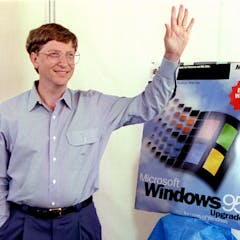
Windows 95 two decades on: but why all the upgrades?
James Harland , RMIT University
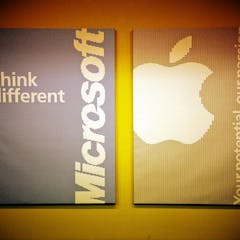
Which is more vulnerable to viruses and hackers: Windows 10 or Mac OS X?
Robert Merkel , Monash University
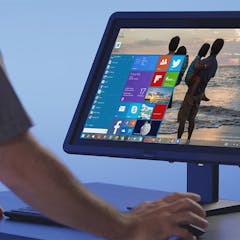
Microsoft wants to win back your support with Windows 10
David Tuffley , Griffith University
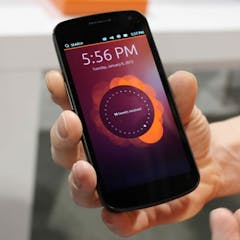
Ubuntu’s foray into phones brings a fresh approach, but will consumers take to it?
Maha Shaikh , Warwick Business School, University of Warwick
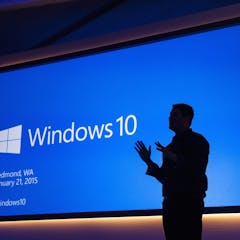
Hello Windows 10: could this be a winner for Microsoft?

Apple and Google make changes in the battle for new markets
Michael Cowling , CQUniversity Australia
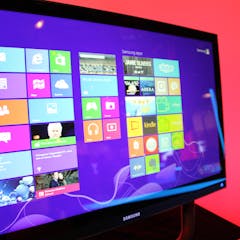
What to expect from the next generation of Windows

Linux is the quiet revolution that will leave Microsoft eating dust
Andrew Smith , The Open University
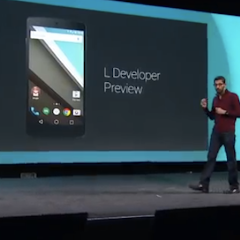
Android L makes sense, even if it doesn’t set the world alight
Barry Avery , Kingston University
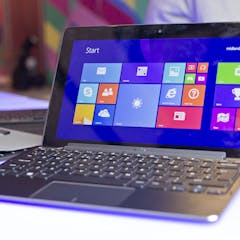
Why is Microsoft dropping support for Windows 8.1?
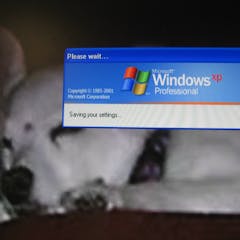
Open source gives new life to old Windows XP machines
Robert Edwards , Australian National University and Eric C. McCreath , Australian National University

Windows XP is still popular – so why is Microsoft pulling the plug?
Srikumar Venugopal , UNSW Sydney

The end is nigh for Windows XP: are you ready?
Related topics.
- Digital economy
- Open Source
- Personal computer
Top contributors
Senior Lecturer in Applied Ethics & CyberSecurity, Griffith University
Associate Professor – Information & Communication Technology (ICT), CQUniversity Australia
Professor of Cyber Security Practice, Edith Cowan University
Lecturer, Australian National University
Lecturer and programmer, Australian National University
Lecturer in Software Engineering, Monash University
Assistant Professor of Information Systems, Warwick Business School, University of Warwick
Associate Professor in Computational Logic, RMIT University
Lecturer, CQUniversity Australia
Lecturer, Edith Cowan University
Lecturer, Ethical Hacking and Defense, Edith Cowan University
Co-Director, Opioid Prescribing Engagement Network and Assistant Professor, University of Michigan
Associate Professor of Plastic and Reconstructive Surgery, University of Michigan
PhD; Lecturer in Computer Science and Engineering, UNSW Sydney
Clinical Associate Professor of Anesthesiology, University of Michigan
- X (Twitter)
- Unfollow topic Follow topic
- 9 Free Online Earth Day Games for Kids
- The Best Gadgets for The Beach or Pool
Operating System (OS) Definition & Examples
Operating system definition and examples of modern operating systems
:max_bytes(150000):strip_icc():format(webp)/tim-fisher-5820c8345f9b581c0b5a63cf.jpg)
- Emporia State University
:max_bytes(150000):strip_icc():format(webp)/ryanperiansquare-de5f69cde760457facb17deac949263e-180a645bf10845498a859fbbcda36d46.jpg)
- Western Governors University
- Payment Services
An operating system is a powerful and usually extensive program that controls and manages the hardware and other software on a computer.
All computers and computer-like devices require operating systems, including your laptop, tablet, desktop, smartphone, smartwatch, and router.
Not sure what operating system you're running? Use the Lifewire System Info Tool below to find out!
Examples of Operating Systems
Laptops, tablets, and desktop computers all run operating systems. You've probably heard of most of them. Some examples include versions of Microsoft Windows (like Windows 11 , Windows 10, Windows 8, Windows 7, Windows Vista, and Windows XP), Apple's macOS (formerly OS X), Chrome OS , and various Unix and Linux distribution lists . (Unix and Linux are open-source operating systems.)
Your smartphone runs a mobile operating system, probably either Apple's iOS or Google's Android. Both are household names, but you may not have realized that they are the operating systems running on those devices.
Servers such as those that host the websites you visit or serve the videos you watch typically run specialized operating systems designed and optimized to run the special software required to make them do what they do. Some examples include Windows Server, Linux, and FreeBSD.
Software & Operating Systems
Most software applications are designed to work with just one company's operating system, like just Windows (Microsoft) or just macOS (Apple).
A piece of software will clearly say which operating systems it supports and will get very specific if necessary. For example, a video production software program might support Windows 11 and Windows 10 but not older versions like Windows Vista and XP.
Software developers also often release other versions of their software that work with different operating systems. In the video production program example, that company might also release another version of the program with the same features, which only works with macOS.
It's also crucial to know if you have Windows 64-bit or 32-bit for your operating system. It's a common question asked when downloading software.
Special types of software called virtual machines can mimic "real" computers and run different operating systems from within them.
Operating System Errors
There are many ways that an operating system itself can become corrupted or damaged, but these issues are relatively rare.
In Windows, the most severe is the Operating System Not Found error message that implies an OS can't even be found!
Operating System Updates
All modern operating systems have a built-in mechanism to keep the software updated. In Windows, this is through Windows Update . Other operating systems work similarly, like when you update the Android OS or download and install new iOS updates .
Keeping an operating system up to date with the newest features is vital so that you're getting the most out of your money. Getting security fixes is another crucial reason to ensure your OS is up-to-date; this can help prevent hackers from getting into your device.
There are three main operating systems for computers: Windows, Apple, and Linux. The two main operating systems for mobile are Android and iOS. There are countless other operating systems made for specific devices, such as Samsung's One UI that only works on Samsung devices.
Google Chromebooks typically run Chrome OS, which is optimized for use with Google's ecosystem of online tools (Google Docs, the Chrome browser, etc.) Some Chromebooks, however, can also run Android apps and Linux apps.
Amazon tablets run Fire OS, which is a modified version of Android. (Learn about the history of Fire OS and how it matches up to Android.)
It can vary. Apple Watch runs on watchOS while most other smartwatches use the Wear operating system , Google's operating system for wearable products.
Get the Latest Tech News Delivered Every Day
- What Kind of Laptop Do You Need? 6 Things to Consider
- The 34 Best Free Data Destruction Tools of 2024
- The Role of Operating Systems in Computer Networking
- 31 Best Free File Shredder Software Programs
- 13 Best Free Hard Drive Testing Tools (April 2024)
- 10 Best Free Disk Partition Software Tools
- 17 Best Free Remote Access Software Tools (2024)
- The 9 Best Free Operating Systems
- Amazon Fire vs. Samsung Tablet: Which Is Right for You?
- What to Do With an Old MacBook
- What Is the Google Chrome OS?
- What Is a Command Line Interpreter?
- 8 Best Free Download Managers
- 11 Best Free System Information Tools
- How to Get Fortnite on a Chromebook
- 32 Best Free Backup Software Tools
Operating systems
Ieee account.
- Change Username/Password
- Update Address
Purchase Details
- Payment Options
- Order History
- View Purchased Documents
Profile Information
- Communications Preferences
- Profession and Education
- Technical Interests
- US & Canada: +1 800 678 4333
- Worldwide: +1 732 981 0060
- Contact & Support
- About IEEE Xplore
- Accessibility
- Terms of Use
- Nondiscrimination Policy
- Privacy & Opting Out of Cookies
A not-for-profit organization, IEEE is the world's largest technical professional organization dedicated to advancing technology for the benefit of humanity. © Copyright 2024 IEEE - All rights reserved. Use of this web site signifies your agreement to the terms and conditions.
Singularity
OS and tools for building dependable systems. The Singularity research codebase and design evolved to become the Midori advanced-development OS project. While never reaching commercial release, at one time Midori powered all of Microsoft’s natural language search service for the West Coast and Asia.
“…it is impossible to predict how a singularity will affect objects in its causal future.” – NCSA Cyberia Glossary (opens in new tab)
What’s New?
The Singularity Research Development Kit (RDK) 2.0 is available for academic non-commercial use. You can download it from CodePlex, Microsoft’s open source project hosting website, here (opens in new tab) .
Our article in Operating Systems Review , Singularity: Rethinking the Software Stack , is a concise introduction to the Singularity project.
Singularity was a multi-year research project focused on the construction of dependable systems through innovation in the areas of systems, languages, and tools. We built a research operating system prototype (called Singularity), extended programming languages, and developed new techniques and tools for specifying and verifying program behavior.
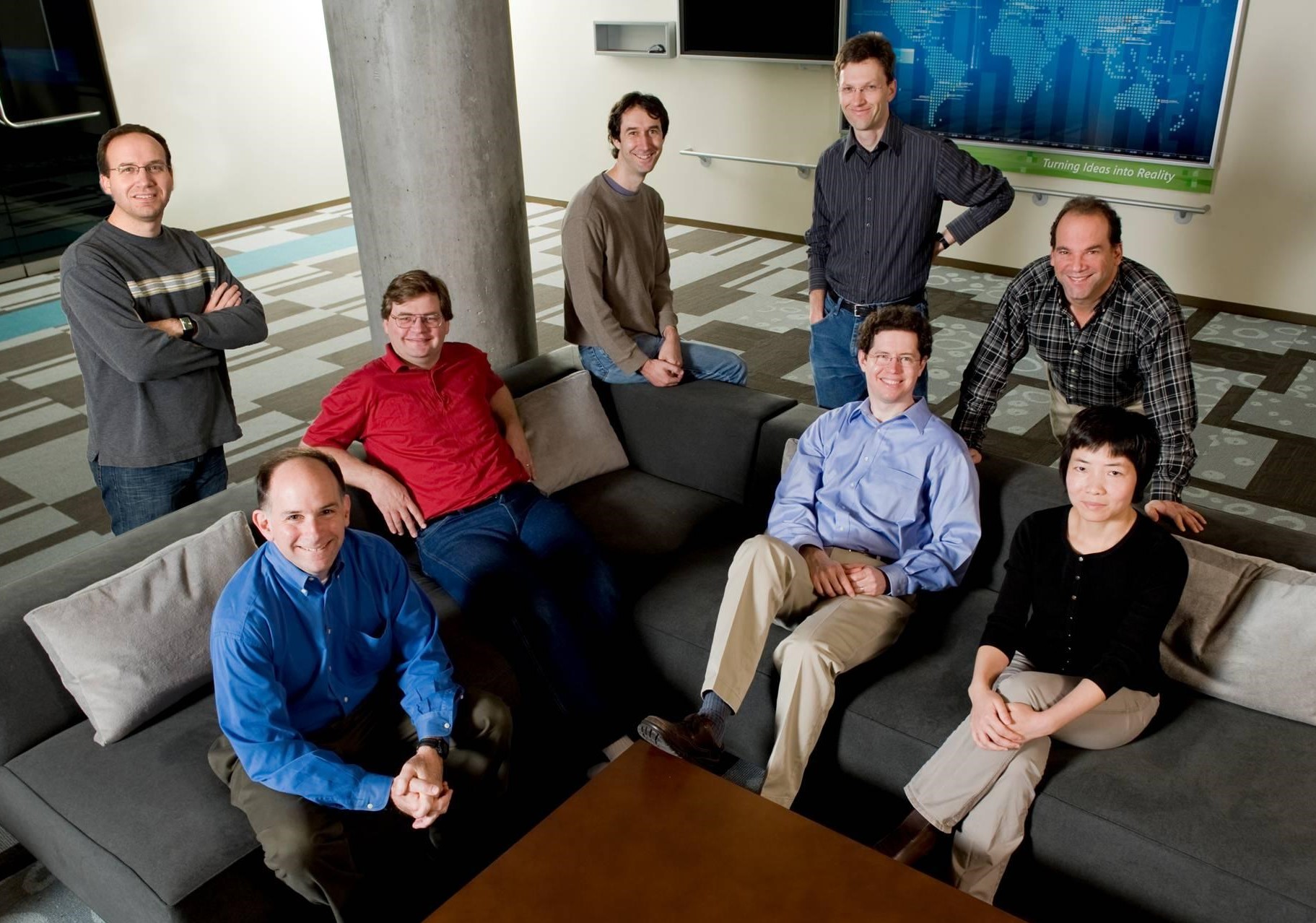
Advances in languages, compilers, and tools open the possibility of significantly improving software. For example, Singularity uses type-safe languages and an abstract instruction set to enable what we call Software Isolated Processes (SIPs). SIPs provide the strong isolation guarantees of OS processes (isolated object space, separate GCs, separate runtimes) without the overhead of hardware-enforced protection domains. In the current Singularity prototype SIPs are extremely cheap; they run in ring 0 in the kernel’s address space. Singularity uses these advances to build more reliable systems and applications. For example, because SIPs are so cheap to create and enforce, Singularity runs each program, device driver, or system extension in its own SIP. SIPs are not allowed to share memory or modify their own code. As a result, we can make strong reliability guarantees about the code running in a SIP. We can verify much broader properties about a SIP at compile or install time than can be done for code running in traditional OS processes. Broader application of static verification is critical to predicting system behavior and providing users with strong guarantees about reliability.
- Singularity: A research OS written in C# (opens in new tab) , Channel 9 (opens in new tab) video and blog, Redmond, WA, August 23, 2005.
- Singularity Revisited (opens in new tab) , Channel 9 (opens in new tab) video and blog, Redmond, WA, December 13, 2005.
- Singularity III: Revenge of the SIP (opens in new tab) , Channel 9 (opens in new tab) video and blog, Redmond, WA, September 1, 2006.
- Singularity IV: Return of the UI (opens in new tab) , Channel 9 (opens in new tab) video and blog, Redmond, WA, September 1, 2006.
Mark Aiken Paul Barham Trishul Chilimbi John DeTreville Ulfar Erlingsson Wolfgang Grieskamp Tim Harris
Orion Hodson Rebecca Isaacs Mike Jones Steven Levi Roy Levin Nick Murphy
Jakob Rehof Wolfram Schulte Dan Simon Bjarne Steensgaard David Tarditi Ted Wobber
- Ryan Braud (University of Califorina, San Diego
- Michael Carbin (MIT)
- Michael Emmi (UCLA)
- Gabriel Kliot (Technion – Israel Institute of Technology)
- Ross McIlroy (University of Glasgow)
- Filip Pizlo (Purdue University)
- Polyvios Pratikakis (Univ. of Maryland)
- Marc Eaddy (Columbia University)
- Haryadi S. Gunawi (Univ. of Wisconsin – Madison)
- Hiroo Ishikawa (Waseda University)
- Virendra J. Marathe (Rochester)
- Polyvios Pratikakis (University of Maryland)
- Roussi Roussev (Florida Tech)
- César Spessot (Universidad Tecnológica Nacional Facultad Córdoba)
- Michael Carbin (Stanford)
- Adam Chlipala (UC Berkeley)
- Martin Pohlack (TU Dresden)
- Avi Shinnar (Harvard)
- Mike Spear (Rochester)
- Aydan Yumerefendi (Duke)
- Jeremy Condit (UC Berkeley)
- Daniel Frampton (Australian National University)
- Chip Killian (UC San Diego)
- Fernando Castor de Lima Filho (Universidade Estadual de Campinas)
- Prince Mahajan (IIT Roorkee)
- Bill McCloskey (UC Berkeley)
- Martin Murray
- Tom Roeder (Cornell)
- Avi Shinnar (Columbia)
- Yaron Weinsberg (Hebrew University of Jerusalem)

Chris Hawblitzel
Senior Researcher

Dushyanth Narayanan
Senior Principal Researcher

Distinguished Engineer

Richard Black
Project Silica Research Director

Sriram Rajamani
Corporate Vice President and Managing Director, Microsoft Research India Lab

Partner Researcher
- Follow on Twitter
- Like on Facebook
- Follow on LinkedIn
- Subscribe on Youtube
- Follow on Instagram
- Subscribe to our RSS feed
Share this page:
- Share on Twitter
- Share on Facebook
- Share on LinkedIn
- Share on Reddit
About Stanford GSB
- The Leadership
- Dean’s Updates
- School News & History
- Commencement
- Business, Government & Society
- Centers & Institutes
- Center for Entrepreneurial Studies
- Center for Social Innovation
- Stanford Seed
About the Experience
- Learning at Stanford GSB
- Experiential Learning
- Guest Speakers
- Entrepreneurship
- Social Innovation
- Communication
- Life at Stanford GSB
- Collaborative Environment
- Activities & Organizations
- Student Services
- Housing Options
- International Students
Full-Time Degree Programs
- Why Stanford MBA
- Academic Experience
- Financial Aid
- Why Stanford MSx
- Research Fellows Program
- See All Programs
Non-Degree & Certificate Programs
- Executive Education
- Stanford Executive Program
- Programs for Organizations
- The Difference
- Online Programs
- Stanford LEAD
- Seed Transformation Program
- Aspire Program
- Seed Spark Program
- Faculty Profiles
- Academic Areas
- Awards & Honors
- Conferences
Faculty Research
- Publications
- Working Papers
- Case Studies
Research Hub
- Research Labs & Initiatives
- Business Library
- Data, Analytics & Research Computing
- Behavioral Lab
Research Labs
- Cities, Housing & Society Lab
- Golub Capital Social Impact Lab

Research Initiatives
- Corporate Governance Research Initiative
- Corporations and Society Initiative
- Policy and Innovation Initiative
- Rapid Decarbonization Initiative
- Stanford Latino Entrepreneurship Initiative
- Value Chain Innovation Initiative
- Venture Capital Initiative
- Career & Success
- Climate & Sustainability
- Corporate Governance
- Culture & Society
- Finance & Investing
- Government & Politics
- Leadership & Management
- Markets & Trade
- Operations & Logistics
- Opportunity & Access
- Organizational Behavior
- Political Economy
- Social Impact
- Technology & AI
- Opinion & Analysis
- Email Newsletter
Welcome, Alumni
- Communities
- Digital Communities & Tools
- Regional Chapters
- Women’s Programs
- Identity Chapters
- Find Your Reunion
- Career Resources
- Job Search Resources
- Career & Life Transitions
- Programs & Services
- Career Video Library
- Alumni Education
- Research Resources
- Volunteering
- Alumni News
- Class Notes
- Alumni Voices
- Contact Alumni Relations
- Upcoming Events
Admission Events & Information Sessions
- MBA Program
- MSx Program
- PhD Program
- Alumni Events
- All Other Events
- Operations, Information & Technology
- Classical Liberalism
- The Eddie Lunch
- Accounting Summer Camp
- Videos, Code & Data
- California Econometrics Conference
- California Quantitative Marketing PhD Conference
- California School Conference
- China India Insights Conference
- Homo economicus, Evolving
- Political Economics (2023–24)
- Scaling Geologic Storage of CO2 (2023–24)
- A Resilient Pacific: Building Connections, Envisioning Solutions
- Adaptation and Innovation
- Changing Climate
- Civil Society
- Climate Impact Summit
- Climate Science
- Corporate Carbon Disclosures
- Earth’s Seafloor
- Environmental Justice
- Operations and Information Technology
- Organizations
- Sustainability Reporting and Control
- Taking the Pulse of the Planet
- Urban Infrastructure
- Watershed Restoration
- Junior Faculty Workshop on Financial Regulation and Banking
- Ken Singleton Celebration
- Marketing Camp
- Quantitative Marketing PhD Alumni Conference
- Presentations
- Theory and Inference in Accounting Research
- Stanford Closer Look Series
- Quick Guides
- Core Concepts
- Journal Articles
- Glossary of Terms
- Faculty & Staff
- Researchers & Students
- Research Approach
- Charitable Giving
- Financial Health
- Government Services
- Workers & Careers
- Short Course
- Adaptive & Iterative Experimentation
- Incentive Design
- Social Sciences & Behavioral Nudges
- Bandit Experiment Application
- Conferences & Events
- Get Involved
- Reading Materials
- Teaching & Curriculum
- Energy Entrepreneurship
- Faculty & Affiliates
- SOLE Report
- Responsible Supply Chains
- Current Study Usage
- Pre-Registration Information
- Participate in a Study
Tesla In 2023: Building A Radically Innovative Operating System
For CEO Elon Musk, Tesla’s mission required not only new technologies to create electric vehicles, but innovation on the software that connected every aspect of the organization. Tesla was founded in 2003 with the goal of revolutionizing the automotive industry, by producing electric vehicles that would help accelerate the world’s transition to sustainable energy. Twenty years later, Tesla had achieved remarkable progress across multiple dimensions such as production capacity, innovative electric vehicles, customer experience, and financial performance.
The case study offers unique insights by Tesla leaders into the company’s journey to create a system and a process that would revolutionize the global automotive sector. To achieve its goals, Tesla had to deliver a dramatically different—and superior—customer experience to accompany the company’s innovative electric vehicles.
The case describes how Tesla’s IT team set about custom-building a vertically integrated system operating system (OS) that connected and bound every aspect of the company’s operations. In fact, the Tesla OS, a custom-built ecosystem, was far more expansive than a typical company’s OS in that it powered all aspects of business planning and customer experiences—this enabled Tesla to go directly to the consumer, and bypass the traditional automotive dealership networks.
Learning Objective
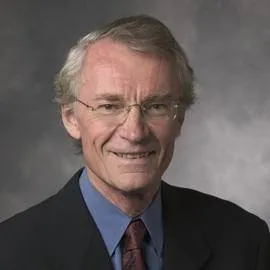
- Priorities for the GSB's Future
- See the Current DEI Report
- Supporting Data
- Research & Insights
- Share Your Thoughts
- Search Fund Primer
- Affiliated Faculty
- Faculty Advisors
- Louis W. Foster Resource Center
- Defining Social Innovation
- Impact Compass
- Global Health Innovation Insights
- Faculty Affiliates
- Student Awards & Certificates
- Changemakers
- Dean Jonathan Levin
- Dean Garth Saloner
- Dean Robert Joss
- Dean Michael Spence
- Dean Robert Jaedicke
- Dean Rene McPherson
- Dean Arjay Miller
- Dean Ernest Arbuckle
- Dean Jacob Hugh Jackson
- Dean Willard Hotchkiss
- Faculty in Memoriam
- Stanford GSB Firsts
- Certificate & Award Recipients
- Teaching Approach
- Analysis and Measurement of Impact
- The Corporate Entrepreneur: Startup in a Grown-Up Enterprise
- Data-Driven Impact
- Designing Experiments for Impact
- Digital Business Transformation
- The Founder’s Right Hand
- Marketing for Measurable Change
- Product Management
- Public Policy Lab: Financial Challenges Facing US Cities
- Public Policy Lab: Homelessness in California
- Lab Features
- Curricular Integration
- View From The Top
- Formation of New Ventures
- Managing Growing Enterprises
- Startup Garage
- Explore Beyond the Classroom
- Stanford Venture Studio
- Summer Program
- Workshops & Events
- The Five Lenses of Entrepreneurship
- Leadership Labs
- Executive Challenge
- Arbuckle Leadership Fellows Program
- Selection Process
- Training Schedule
- Time Commitment
- Learning Expectations
- Post-Training Opportunities
- Who Should Apply
- Introductory T-Groups
- Leadership for Society Program
- Certificate
- 2023 Awardees
- 2022 Awardees
- 2021 Awardees
- 2020 Awardees
- 2019 Awardees
- 2018 Awardees
- Social Management Immersion Fund
- Stanford Impact Founder Fellowships and Prizes
- Stanford Impact Leader Prizes
- Social Entrepreneurship
- Stanford GSB Impact Fund
- Economic Development
- Energy & Environment
- Stanford GSB Residences
- Environmental Leadership
- Stanford GSB Artwork
- A Closer Look
- California & the Bay Area
- Voices of Stanford GSB
- Business & Beneficial Technology
- Business & Sustainability
- Business & Free Markets
- Business, Government, and Society Forum
- Second Year
- Global Experiences
- JD/MBA Joint Degree
- MA Education/MBA Joint Degree
- MD/MBA Dual Degree
- MPP/MBA Joint Degree
- MS Computer Science/MBA Joint Degree
- MS Electrical Engineering/MBA Joint Degree
- MS Environment and Resources (E-IPER)/MBA Joint Degree
- Academic Calendar
- Clubs & Activities
- LGBTQ+ Students
- Military Veterans
- Minorities & People of Color
- Partners & Families
- Students with Disabilities
- Student Support
- Residential Life
- Student Voices
- MBA Alumni Voices
- A Week in the Life
- Career Support
- Employment Outcomes
- Cost of Attendance
- Knight-Hennessy Scholars Program
- Yellow Ribbon Program
- BOLD Fellows Fund
- Application Process
- Loan Forgiveness
- Contact the Financial Aid Office
- Evaluation Criteria
- GMAT & GRE
- English Language Proficiency
- Personal Information, Activities & Awards
- Professional Experience
- Letters of Recommendation
- Optional Short Answer Questions
- Application Fee
- Reapplication
- Deferred Enrollment
- Joint & Dual Degrees
- Entering Class Profile
- Event Schedule
- Ambassadors
- New & Noteworthy
- Ask a Question
- See Why Stanford MSx
- Is MSx Right for You?
- MSx Stories
- Leadership Development
- Career Advancement
- Career Change
- How You Will Learn
- Admission Events
- Personal Information
- Information for Recommenders
- GMAT, GRE & EA
- English Proficiency Tests
- After You’re Admitted
- Daycare, Schools & Camps
- U.S. Citizens and Permanent Residents
- Requirements
- Requirements: Behavioral
- Requirements: Quantitative
- Requirements: Macro
- Requirements: Micro
- Annual Evaluations
- Field Examination
- Research Activities
- Research Papers
- Dissertation
- Oral Examination
- Current Students
- Education & CV
- International Applicants
- Statement of Purpose
- Reapplicants
- Application Fee Waiver
- Deadline & Decisions
- Job Market Candidates
- Academic Placements
- Stay in Touch
- Faculty Mentors
- Current Fellows
- Standard Track
- Fellowship & Benefits
- Group Enrollment
- Program Formats
- Developing a Program
- Diversity & Inclusion
- Strategic Transformation
- Program Experience
- Contact Client Services
- Campus Experience
- Live Online Experience
- Silicon Valley & Bay Area
- Digital Credentials
- Faculty Spotlights
- Participant Spotlights
- Eligibility
- International Participants
- Stanford Ignite
- Frequently Asked Questions
- Founding Donors
- Location Information
- Participant Profile
- Network Membership
- Program Impact
- Collaborators
- Entrepreneur Profiles
- Company Spotlights
- Seed Transformation Network
- Responsibilities
- Current Coaches
- How to Apply
- Meet the Consultants
- Meet the Interns
- Intern Profiles
- Collaborate
- Research Library
- News & Insights
- Program Contacts
- Databases & Datasets
- Research Guides
- Consultations
- Research Workshops
- Career Research
- Research Data Services
- Course Reserves
- Course Research Guides
- Material Loan Periods
- Fines & Other Charges
- Document Delivery
- Interlibrary Loan
- Equipment Checkout
- Print & Scan
- MBA & MSx Students
- PhD Students
- Other Stanford Students
- Faculty Assistants
- Research Assistants
- Stanford GSB Alumni
- Telling Our Story
- Staff Directory
- Site Registration
- Alumni Directory
- Alumni Email
- Privacy Settings & My Profile
- Success Stories
- The Story of Circles
- Support Women’s Circles
- Stanford Women on Boards Initiative
- Alumnae Spotlights
- Insights & Research
- Industry & Professional
- Entrepreneurial Commitment Group
- Recent Alumni
- Half-Century Club
- Fall Reunions
- Spring Reunions
- MBA 25th Reunion
- Half-Century Club Reunion
- Faculty Lectures
- Ernest C. Arbuckle Award
- Alison Elliott Exceptional Achievement Award
- ENCORE Award
- Excellence in Leadership Award
- John W. Gardner Volunteer Leadership Award
- Robert K. Jaedicke Faculty Award
- Jack McDonald Military Service Appreciation Award
- Jerry I. Porras Latino Leadership Award
- Tapestry Award
- Student & Alumni Events
- Executive Recruiters
- Interviewing
- Land the Perfect Job with LinkedIn
- Negotiating
- Elevator Pitch
- Email Best Practices
- Resumes & Cover Letters
- Self-Assessment
- Whitney Birdwell Ball
- Margaret Brooks
- Bryn Panee Burkhart
- Margaret Chan
- Ricki Frankel
- Peter Gandolfo
- Cindy W. Greig
- Natalie Guillen
- Carly Janson
- Sloan Klein
- Sherri Appel Lassila
- Stuart Meyer
- Tanisha Parrish
- Virginia Roberson
- Philippe Taieb
- Michael Takagawa
- Terra Winston
- Johanna Wise
- Debbie Wolter
- Rebecca Zucker
- Complimentary Coaching
- Changing Careers
- Work-Life Integration
- Career Breaks
- Flexible Work
- Encore Careers
- D&B Hoovers
- Data Axle (ReferenceUSA)
- EBSCO Business Source
- Global Newsstream
- Market Share Reporter
- ProQuest One Business
- Student Clubs
- Entrepreneurial Students
- Stanford GSB Trust
- Alumni Community
- How to Volunteer
- Springboard Sessions
- Consulting Projects
- 2020 – 2029
- 2010 – 2019
- 2000 – 2009
- 1990 – 1999
- 1980 – 1989
- 1970 – 1979
- 1960 – 1969
- 1950 – 1959
- 1940 – 1949
- Service Areas
- ACT History
- ACT Awards Celebration
- ACT Governance Structure
- Building Leadership for ACT
- Individual Leadership Positions
- Leadership Role Overview
- Purpose of the ACT Management Board
- Contact ACT
- Business & Nonprofit Communities
- Reunion Volunteers
- Ways to Give
- Fiscal Year Report
- Business School Fund Leadership Council
- Planned Giving Options
- Planned Giving Benefits
- Planned Gifts and Reunions
- Legacy Partners
- Giving News & Stories
- Giving Deadlines
- Development Staff
- Submit Class Notes
- Class Secretaries
- Board of Directors
- Health Care
- Sustainability
- Class Takeaways
- All Else Equal: Making Better Decisions
- If/Then: Business, Leadership, Society
- Grit & Growth
- Think Fast, Talk Smart
- Spring 2022
- Spring 2021
- Autumn 2020
- Summer 2020
- Winter 2020
- In the Media
- For Journalists
- DCI Fellows
- Other Auditors
- Academic Calendar & Deadlines
- Course Materials
- Entrepreneurial Resources
- Campus Drive Grove
- Campus Drive Lawn
- CEMEX Auditorium
- King Community Court
- Seawell Family Boardroom
- Stanford GSB Bowl
- Stanford Investors Common
- Town Square
- Vidalakis Courtyard
- Vidalakis Dining Hall
- Catering Services
- Policies & Guidelines
- Reservations
- Contact Faculty Recruiting
- Lecturer Positions
- Postdoctoral Positions
- Accommodations
- CMC-Managed Interviews
- Recruiter-Managed Interviews
- Virtual Interviews
- Campus & Virtual
- Search for Candidates
- Think Globally
- Recruiting Calendar
- Recruiting Policies
- Full-Time Employment
- Summer Employment
- Entrepreneurial Summer Program
- Global Management Immersion Experience
- Social-Purpose Summer Internships
- Process Overview
- Project Types
- Client Eligibility Criteria
- Client Screening
- ACT Leadership
- Social Innovation & Nonprofit Management Resources
- Develop Your Organization’s Talent
- Centers & Initiatives
- Student Fellowships
Github migration
As a new year begins, its time to reflect on some of the things that have happened since the last news entry - which is a shocking 3 years ago! Firstly, the main AROS development has now migrated to GitHub . It has been a contraversial decision/move but in the long run is better for the developer community, and AROS as a whole. Along with this has been the migration of the nightly builds to use Azure Pipelines, so that as a developer team we can all contribute to the maintenance/monitoring and fault resolution that is frequently needed in a project such as AROS, and in a more timely manner. You can find details about GIT usage in our documentation .
There's an experimental version of AROS x86_64 which can make use of multiple CPU cores. The scheduling code was rewritten to enable it by sharing a common task list of waiting tasks to run, and allowing the tasks to specify which core they can run on. Exec and other core components have been adapted to properly lock access to resources they use so that tasks running on other cores can safely access some things.
For a long time the m68k port has played only a minor role. This has changed recently because of the Vampire turbo cards where AROS will be the standard operating system. Various improvements have been done for the graphics drivers, the screen composition, ATA device, keyboard handling, MMU support etc.
Raspberry Pi
Some progress has been made on the port for the card-sized computer . An USB driver has been written and a big-endian target has been added.
AHCI Device
The source code of the AHCI device has beeen refactored to work more similarly to ATA device, exposing hidd controller/bus/unit classes that can be viewed in SysExplorer.
Build System
A massive amount of refactoring has been done to make sure only the correct flags are used when building components, and to make sure flags are used consistently. It has beeen made sure object files from different components don't pollute each other when they are made in the same mmakefile. Changes have been made to allow modules to be built for different flavours (e.g. cpu types) of a target. The flags used when compiling c++/objc code have been cleaned up.
November 2016 Highlights
November saw a fair amount of changes in AROS system. Neil Cafferkey provided further improvements to MUI and made 3D acceleration on the IntelGMA video driver work again. Krzysztof Smiechowicz fixed Windows-hosted AROS port, enabling Windows users to enjoy AROS again, and was making final changes to ABIv0 system refresh. Olivier Brunner fixed a memory trashing problem in AROS MUI List class and Miloslav Martinka made a small but usefull improvement to Wanderer's Info tool, which from now on shows the path at which the icon is located and allows opening that path in separate Wanderer window.
Paolo Besser, who is working on next version of Icaros, announced that it will support also hosted flavors of AROS which is a welcomed development by AROS community. It means Linux and Windows users will be able to enjoy Icaros without a need to install virtual machine.
Third party development also provided new, interesting software. Marcus Sacrow prepared versions of his EdiSyn and Maporium applications for AROS ARM platform, which is a very welcomed development as ARM platform has very few 3rd party applications at the moment. Yannick Erb provided a new version of MAME (Multiple Arcade Machines Emulator) which can be downloaded from AROS Archives.
October 2016 Highlights
In October the AROS repository breached the 53,000 commits mark thanks to contributions from multiple developers. Neil Cafferkey continued his work on improving MUI as well as fixing the IntelGMA video driver. Miloslav Martinka contributed further Czech localization as well as a localized WiMP tool. Yannick Erb and Marcus Sackrow contributed fixes to AROS programs and we saw the introduction of a new AROS GUI theme. Lastly, the ARM Linux-hosted version of AROS has been fixed to compile again as part of the ABIv0 refresh by Krzysztof Smiechowicz.
After September's explosion of distributions, October was quiet on that front. Third party developers however continued their work. Yannick Erb released an updated version of the ZuneView tool and Joerg Renkert released a new version of his ModExplorer application for playing online and offline music modules. AROS archives also saw the upload of two interesting Zelda-type games, 'Time to Triumph' and 'Navi's Quest'.
September 2016 Highlights
September was definitely a distro month. First, the AEROS distribution was refreshed by Pascal Papara and brought to version 4.2.1 on all supported platforms (Raspberry Pi 1/2/3 and Odroid XU3/XU4). The changes include integration of EmuLa, installation of the Chrome browser supporting Flash, SDL2 libraries, ScummVM 1.8 and the game 'Amiga Racer'.
Staying on the ARM platform, September also saw the first release of an AROS distribution targetted at the Orange Pi platform. The distribution, called PiAROS, uses the hosted version of AROS, similar to AEROS.
Lastly, Icaros Desktop, the x86 distribution by Paolo Besser, received an update and is now available in version 2.1.3. The new version brings updates to several applications, including Odyssey Web Browser, PortablE, SimpleMail and Mapparium.
In core AROS development we had two activities. While Neil Cafferkey continued making improvements to MUI, Miloslav Martinka added Czech localization to a number of applications as well as implementing localization in Appearance preferences.
August 2016 Highlights
Opening this news summary is the announcement of a public, read-only access for AROS repository. So far such access was only provided via the AROS GIT-mirror but now it is also available on the main repository.
Also last month, a first full developer pack for AROS 68k has been released by Krzysztof Smiechowicz in cooperation with the Apollo/Vampire team. The dev-pack contains a ready-to-use native development environment for 68k as well as scripts that will download and build AROS 68k on a Linux host, delivering system and cross compiler.
In the AROS core there have been a few notable developments. Nick Andrews continued making fixes to AROS to allow compilation under GCC 6.1. Krzysztof Smiechowicz updated the OpenSSL library to version 1.0.1t and started porting the OpenSSH 7.3 package, releasing the first, alpha version. The work on the ssh client was triggered by the results of June's usage survey. Neil Cafferkey continued making fixes and extensions to MUI's List class and finally a number of programs received new or updated Czech localization thanks to Miloslav Martinka.
Outside of the core team, Pascal Papara continued releasing updates to his AROS distributions. In August AEROS 4.0.1 has been released with support for Raspberry Pi 1, 2 and 3, containing updated kernels and an update for the UAE4ARM emulator.
Closing this update, there have been two interesting third party developments in August. SimpleMail 0.42 with SSL support has been released and a new OpenGL-enabled port of the classic 'Elite 2: Frontier' has been made available by David Douglas.
The Emergency Medical Team Operating System — a vision for field hospital data management in following the concepts of predictive, preventive, and personalized medicine
- Open access
- Published: 22 April 2024
Cite this article
You have full access to this open access article
- Jan Gaebel ORCID: orcid.org/0000-0001-5343-138X 1 ,
- Erik Schreiber 1 &
- Thomas Neumuth 1
In times where sudden-onset disasters (SODs) present challenges to global health systems, the integration of predictive, preventive, and personalized medicine (PPPM / 3PM) into emergency medical responses has manifested as a critical necessity. We introduce a modern electronic patient record system designed specifically for emergency medical teams (EMTs), which will serve as a novel approach in how digital healthcare management can be optimized in crisis situations. This research is based on the principle that advanced information technology (IT) systems are key to transforming humanitarian aid by offering predictive insights, preventive strategies, and personalized care in disaster scenarios. We aim to address the critical gaps in current emergency medical response strategies, particularly in the context of SODs. Building upon a collaborative effort with European emergency medical teams, we have developed a comprehensive and scalable electronic patient record system. It not only enhances patient management during emergencies but also enables predictive analytics to anticipate patient needs, preventive guidelines to reduce the impact of potential health threats, and personalized treatment plans for the individual needs of patients. Furthermore, our study examines the possibilities of adopting PPPM-oriented IT solutions in disaster relief. By integrating predictive models for patient triage, preventive measures to mitigate health risks, and personalized care protocols, potential improvements to patient health or work efficiency could be established. This system was evaluated with clinical experts and shall be used to establish digital solutions and new forms of assistance for humanitarian aid in the future. In conclusion, to really achieve PPPM-related efforts more investment will need to be put into research and development of electronic patient records as the foundation as well as into the clinical processes along all pathways of stakeholders in disaster medicine.
Avoid common mistakes on your manuscript.
Introduction
In the rapidly evolving field of healthcare, the integration of predictive, preventive, and personalized medicine (PPPM/3PM) within emergency and disaster response frameworks has become increasingly critical [ 1 , 2 ], particularly in the context of sudden-onset disasters (SODs), where the ability to swiftly and effectively deploy humanitarian aid can significantly impact patient outcomes [ 3 , 4 , 5 ]. The principles of PPPM as a concept target to provide medical decisions, practices, mechanisms or products tailored to individual patients, or patient groups. Electronic patient record (EPR) systems must support this notion. But not only the patient data should be personalized but the management system itself should include aspects of personalization and individuality, especially in the setting of emergency and disaster medicine, in which medical professionals work under stressful and demanding circumstances.
SODs require a response system that can be deployed quickly and flexibly [ 6 , 7 , 8 ]. Over 1 million people have suffered or died from natural disasters since 1995, e.g., earthquakes or floods [ 5 , 9 ]. Other global perils, like pandemics or widespread illnesses, require actions of PPPM [ 10 ]. Most European countries provide special units of humanitarian and disaster aid. These so-called emergency medical teams (EMTs) are “…groups of health professionals (doctors, nurses, paramedics, etc.) treating patients affected by an emergency or disaster.” [ 11 ]. They are specialized and trained for specific field hospital operations and are sent to disaster relief operations and support the local healthcare facilities [ 12 ].
Initial activities
In 2017, the project European Modular Field Hospital (EUMFH) aimed to explore how the medical capacity of the Union Civil Protection Mechanism can be improved [ 13 ]. Different Member States of the European Union combined their expertise and investigated the possibility to build a common deployable emergency medical team (EMT) level 3. The EMT-working group under the lead of the World Health Organization (WHO) developed standards for EMTs and the variety of services they provide as well as a referral system. This included the goal to create an IT concept for improved data processing and communication. As part of the project, the Innovation Center Computer Assisted Surgery at the University of Leipzig aimed to analyzing and conceptualizing medical and information technology solutions for the collection and forwarding of information for diagnostics, therapy, and hospital management. The project aligns with the WHO’s program for quick, flexible responses to emergencies and aims toward proposing a digital infrastructure. EMT information infrastructure needs to ensure a constant flow of information within the command structure in order to enable the EMT management to make up-to-date decisions on the appropriate use of limited resources in a critical and highly dynamic environment. To solve the challenge, the information technology concepts of existing EMTs of level 1 and 2 or non-European level 3 field hospitals were analyzed. At the time, the first results of the EUMFH project were demonstrated and tested in practice at an EU emergency exercise for medical civil protection modules in 2018. An earthquake with a magnitude of 7.5 in the city of Bucharest was simulated with extensive damage and numerous injuries. The exercise was intended to train the coordination and cooperation of various EMT from different nations. Schreiber et al. recorded, documented, and visualized all patient information within the mobile hospital in digital form, from anamnesis to discharge [ 14 ].
The current initiative
Our current initiative, in relation to the medical capacity of the Union Civil Protection Mechanism, seeks to explore the enhancement through IT solutions that prioritize PPPM principles. The work at hand aims to demonstrate the approach to finding a solution for the described problem by description the current approach to an EPR system for the demanding utilization of emergency medical teams. We illustrate a novel approach to emergency medical team operations, specifically through the lens of an Emergency Medical Team Operating System (EOS). This article contributes to the design and development of advanced health information systems designed to enhance field hospital data management by leveraging PPPM concepts.
Methods and materials
System definition and specification.
EMTs work under severe constraints and potentially face shortages of every resource imaginable: from medications and personnel to electricity, connectivity, and patient information [ 15 ]. Additionally, time pressures make collecting, communicating, and documenting patient data difficult, as does the lack of a standardized framework for the users from many different countries and backgrounds [ 16 ]. An electronic patient record must be able to handle all of these challenges while being lightweight, scalable, and highly customizable [ 17 ]. Figure 1 illustrates how those requirements, especially features for electronic patient record and EMT management, integrate with data reporting and exchange. Flexibility and modularity in a pre-clinical setting allows for efficient utilization of such a system.
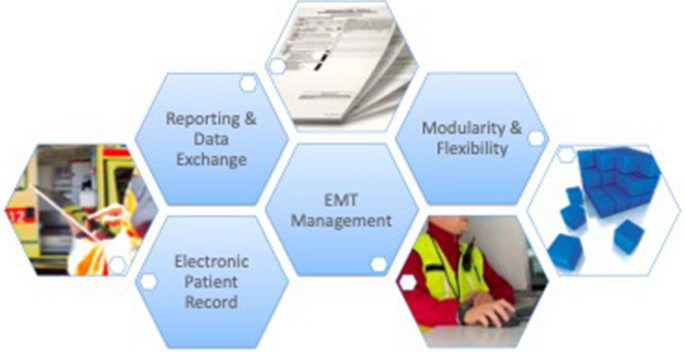
Vision of a comprehensive information system for field hospitals with the four main features that are needed in the field: electronic patient records, emergency medical team (EMT) management, reporting and data exchange, modularity and flexibility
We performed extensive requirement analysis with users from different European EMTs to gather a collective knowledge on the specific needs and aggregated all the feedback to create a common ground for an electronic patient record system. The most important functions to fulfill these requirements are described in the following sections.
Clinical requirements
An EPR system for EMT must cover all clinical features that normal hospital information systems provide. This ranges from patient admission, treatment planning and documentation to referral documentation and the creation of medical reports. Other, non-medical features should also be included, e.g., material logistics and management, but are not covered within this article. The following paragraphs describe the specific clinical tasks in detail.
Patient admission and identification: patients treated in an EMT must be admitted to the clinic, and therefore into the EPR. This comprises gathering identifying information and creating unique patient identifiers (PID). For the specific use case in an emergency setting, the triage category of a patient is vital to determine the cases urgency. This data should be available at all time and accessible by different clinical modules of EOS, as illustrated in Fig. 2 , where clinical data will be used (or referenced) for other management processes, e.g., stock management or department administration. Thereby, more precise and personalized processes are achievable.
Treatment planning and documentation: physicians and nurses attending the patients need to document their assessments and thoughts about a case. They need to be able to write down recommendations and plans for the next measures to take with a specific patient. Also, the performed actions must be stored within an EPR. All diagnostic data from examinations must be available.
Referral to different places of therapy and special clinical procedures must be documented and the respective patient information needs to be communicated along all attending staff. This entails the request for diagnostic imaging of surgical treatment by specialized departments of an EMT.
The finalization of treatment must be documented and all related information must be provided to the transferring entity (e.g., local hospital, general practitioner, other EMT).
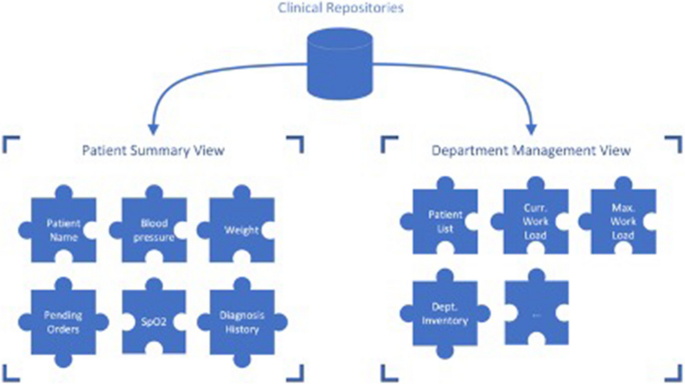
Clinical repositories in Emergency Medical Team Operating Systems (EOS) serve multiple purposes, patients’ master data and clinical data will be applied for administrative or logistical (e.g., stock management) use cases
Regulatory requirements
Data protection is one key aspect that must be implemented by any information system, especially clinical information and electronic patient record systems [ 18 ]. A system must provide a way for users demonstrate that the patient has consented to processing of his or her personal data [ 18 ]. Footnote 1 Processing clinical data must by default only be allowed to personnel directly involved in the treatment. Any other data, e.g., patients from another ward or department, shall by default not be accessible [ 18 ]. Footnote 2 Any clinical data recorded needs to be consistent and therefore an electronic record system shall maintain a record of processing activities under its responsibility [ 18 ]. Footnote 3 This includes any changes of individual of clinical data by some user of the system.
EMTs, typically requested by foreign governments and deployed by domestic authorities, must provide regular reports to the respective authority, such as the domestic Ministry of Health or Ministry of Interior, or the local authorities of the country of operation. The “Emergency Medical Team Minimum Data Set Working Group” of the WHO has developed a standardized data sheet by the called EMT Minimum Data Set (MDS) [ 19 , 20 ]. Reports must adhere to the given format and ideally be automatically generated from existing EPR data.
However, there is a need for commonly agreed standards for what organizational and technical aspects EMTs should adhere to, as well as what features software and hardware should offer, independent of products and manufacturers. Today, there are already globally recognized standards for hardware and information security, such as ISO 27001. Medical data standards are defined internationally by organizations such as HL7, and most vendors comply. The National Electrical Manufacturers Association has published a document on cybersecurity features of networked medical devices, known today as the Manufacturer Disclosure Statement for Medical Device Security.
Technical requirements
Clinical processes vary among EMTs due to the modular nature of their setup. Therefore, an EPR should also adhere to this structure. Different disaster scenarios involve varying medical conditions and interventions. To ensure prompt and adequate delivery of care with minimal misunderstandings between teams, highly configurable components should be provided. These components can be pre-populated at the onset of a disaster and updated during missions to accommodate changing conditions and requirements. This feature allows for the input of clinical or logistical details to be used in treatment documentation. For example, a list of medications commonly used by EMTs can be included in clinical records after being prescribed to a patient. Additionally, diagnoses established by EMTs (usually a subset of larger classification systems like ICD-10) can be assigned to patients in their electronic records.
The system must be fully functional and have stable performance. As the system is responsible for transmitting critical data to medical personnel, it must be crash-proof. Information must be conveyed reliably and at the same time the transmission and presentation should remain agile. The system must be able to register the right patient, call up their data, and ultimately display the results. In addition, it must respond correctly to requests from the users.
From a usability perspective, it is important to keep the users’ attention on treating the patient and distractions should be avoided. Therefore, the system should be easy to use and ideally intuitive, requiring minimal effort to master. During operation, time and information are critical to a patient’s condition. Accordingly, the system must be able to act and react quickly and appropriately. In order to minimize or avoid latency periods caused by the user’s difficulties in understanding, the display must be clear and easy to understand.
The environment for an EPR inside the infrastructure of an EMT is rather unfavorable. It is usually built outside in mobile housing or tents. Power supply is usually organized by the team itself, by bringing power generators and fuel. However, shortages are always a danger and relying on electronic systems requires a stable power supply, of course. Hence, the application needs to be slim and economical regarding its power demands.
Non-functional requirements
Qualitative aspects like usability, availability, or robustness are also very important when designing an electronic health record system. They directly affect user acceptance, user performance, and ultimately the patient safety [ 21 ]. In general, a system should be designed to be as unrestrictive as possible and as flexible as needed, especially in emergencies.
An idea of an optimal system for preclinical use
In this section, we describe the Emergency Medical Team Operating System (EOS) — a specially designed electronic patient record (EPR) system for use during humanitarian aid missions by EMT users. The EOS system is built as a local network in a mobile facility (such as tents or lightweight construction), and users access the core application through client devices (like laptops, tablet computers, or mobile phones). The following paragraphs present an idea of an optimal information system; how it should be set up, how users would interact with it. Subsequently, we present how different restrictions narrow this design. These are the results of customer involvement and extensive requirement analyses over the past years. However, we give an outlook on how a realistic implementation looks like and how it still can produce added value for the patients and clinical users. Those considerations will be reflected in regard to PPPM as well.
Using any tool or assistance system should have minimal impact on clinical users’ work and require minimal effort. The same goes for using an information system. Following the basic principle of medical informatics; the right information should be presented to the right user at the right time in the right format through the right channel. Authenticating oneself and accessing an electronic record in the system should be fairly easy. Stakeholders often expressed the wish to be able to log in easily, only with their ID badge, e.g., using the device camera of a laptop. On the other hand, devices or terminals could always be available for accessing the system giving instant access to the system. Opening the correct record and providing some automatism could be done by proximity sensors attached to the patient bed (e.g., RFID) or simply by scanning patient ID labels. Documentation is automated by speech recognition, data integration from other medical devices (e.g., bedside monitors), or situation awareness.
A seamless integration into clinical workflows is the optimal solution. Data should be gathered automatically, without the need for any user to put in effort to enter specific information into the system. Medical devices that provide data, e.g., a bedside monitor or radiological diagnostics, can be integrated directly and their results can be viewed from the electronic patient record. Principles from modern consumer electronics could provide even more usability and efficiency. Voice control and dictation allow for a very easy way of entering data and providing clinical documentation. Language processing from spoken words could derive further actions and instructions to colleagues.
Mobility and accessibility are major aspects that play an important role in a dynamic setting like an EMT. Clinical users will have to be as flexible as possible in the utilization of medical devices and systems. Access to an electronic patient record system must be possible in different (or changing) situations. The system must therefore be utilized on stationary and mobile devices, presented on small screens or large monitors that present an overview of a complete ward.
In multinational teams working together in a given scenario, supporting systems should be multinational, as well. Not only should the user interfaces support different languages and display their components according to a user’s configuration. Using modern language processing technology, it would be desirable to also have written texts translated, e.g., doctors’ notes or order entries. This would allow not only the multinational staff to have a safer way of communicating but it would also increase compliance by patients since they can understand, too.
A realistic implementation
A realistic implementation of EOS, however, looks different. Internal and external influencing factors that limit and constrain the features or usability, most of them are restricted by regulatory or organizational aspects. There are also technical constraints. They have less real impact on resulting systems, however.
Electronic patient records must be protected from any malicious access, data leaks, or even manipulation. Therefore, access to the system must be secured with strict methods which contradicts the wish of easy and convenient access. Two-factor authentication would provide a high level of security. This will, however, require access to a second factor (e.g., mobile device) for every employee. The system will have to log off the user after a certain amount of inactivity not to have a terminal or device leaving access to data to unauthorized people.
Deploying the patient record system must be possible on low-level hardware resources that are being shipped with the EMT. A centralized way of providing access to the system, e.g., on a domestic server providing services through the internet, cannot be guaranteed since the operation in a SOD site cannot ensure internet access. Therefore, the operational IT hardware inside the EMT limits the system’s capabilities, as well. EOS is designed as a client–server web application that can be run on the EMTs’ hardware. As a web application, it still can be accessed on different devices and support the need for mobility.
Integration with other systems must be scaled back as well. Since most medical devices restrict their interfaces to linear and direct communication with single clients, a general approach to data integration cannot be embraced. However, EOS will provide interfaces to established standards: for example, HL7 and DICOM [ 22 ]. As soon as one medical device allows data exchange in these formats, they can be integrated into the electronic patient record system, as well.
Documentation of clinical activities will be performed in rather conventional ways. Applying text-to-speech technology in a loud or dynamic setting will most likely not present the desired output. However, EOS integrates modern principles of usability and access to allow an easy and efficient way for data entry. This also should result in an increased satisfaction with the system and raise general acceptance of a not optimal but still productive electronic patient record system.
Impact for predictive, preventive, and personalized medicine
Even when not providing an optimal solution yet, running in a trouble-free environment, establishing an electronic patient record system within EMT structures grants many advantages and added-value. Further reflections to technical advancements or sophistication do not stand in contrast to the mentioned restrictions. However, they must ensure a secured installation and safe application during EMT operation. The following paragraphs provide insight and outlook into the aspects of PPPM in disaster-relief scenarios.
Toward personalization of EPR
Bringing the advantages of electronic patient records to EMT users demonstrated crucial aspects of system design. The need to provide efficient patient record documentation also produces insight into how EPRs (and their managing systems) can be customized and personalized to fit the users’ needs and wishes. Having a system at hand that allows to adapt to users’ processes and their specific work environment increases the acceptability. Having medical professionals to familiarize with new technology is a complex and demanding challenge. Providing a technology that adapts to the user (at least for certain aspects) simplifies not only the introduction and establishment but in the end, it also increases patient safety.
Toward predictiveness of emergency patients
Fortunately, sudden-onset disasters occur too rarely to be part of everyday clinical practice. However, this also means that there is less medical knowledge available about SODs. This is further reinforced by poor access to data due to paper-based documentation.
Among other positive effects, the use of an EPR system in an EMT can improve the quality of the documentation and data accessibility and thus helps to accumulate valuable data with each mission that can be analyzed to gain further knowledge how to support personnel, processes, and resource utilization based on clinical evidence. Support can range from direct clinical assistance to simulation of complex cases for training or mission planning [ 23 , 24 , 25 ].
Regardless of what is feasible, an ideal EMR for SODs would be capable of tracking the patient journey of each individual patient. This would not only include a very detailed list of complaints, diagnoses, therapies, and aftercare that connects the different steps of the patient journey in a causal way, but also the initial triage status and days between the initial disaster as well as initial events that lead to the patients first admission to the field hospital. During admission, the patient’s information about medication, prior treatments, demography, etc. would be imported digitally from the ambulance and/or the national records via network, mobile app, or similar. Combining this data with the boundary conditions of each mission like type and intensity of the SOD and tracking of treatment success would create an ideal data basis for assessment and prediction. For each patient, all available case data could be compared with those of all previous patients regarding their similarity and used subsequently for assessment of the patients’ current situation, possible therapy options, and prediction of their outcome. This enables various approaches toward individual care and prediction which will be outlined in the following:
AI-based triage prioritization
Triage is crucial to utilize the limited EMT resources most efficiently. Patients will be categorized according to their urgency for medical services. Despite that there are strict rules to assign a triage category to a patient, there is no evidence-based evaluation if an assignment was appropriate. By utilizing the aforementioned data basis, an AI-driven tool is able to analyze triage categories [ 26 ] and treatment outcome to suggest an optimal triage category for each new patient based on clinical evidence. This approach could help to provide a safer, more resource efficient and more timely treatment.
Patient occurrence forecast
From growing patient data (e.g., made available anonymized), clinical informaticians, biometricians, or epidemiologists can learn and provide more insight into the way patient cohorts appear or behave in a humanitarian mission. Prediction of patient emergence is crucial to optimal resource allocation during EMT operation. Having an electronic system available that can predict what is needed in the next hour/day/week on the basis of evidence allows the extremely challenging and demanding work or EMTs and their limited resources to be managed better with a higher chance of all patients receiving the treatment they require.
Toward prevention of SOD-related reduced treatment quality
Following the AI-based triage prioritization approach, further recommendations can be proposed by EOS countering the lack of resources during SOD and reducing the risk of lowering treatment quality. This might include semi-automated documentation: suggestion of data entries, pre-filling letters or forms based on similar patients with similar results; suggested procedures for diagnosis finding (e.g., to exclude problem A do procedure B); suggest therapy options that were successfully with similar patients.
Keeping track of materials, consumables or medication with an automated documentation process, can also be used to provide an early-warning system for stock shortages. By alerting and proposing delivery for additional materials, danger or shortcomings can be avoided.
These systems and technical features are challenging to implement and set up, however. The aforementioned technical limitations might prevent some of these aspects to be providing altogether. Local infrastructure is likely to be insufficient regarding network availability/quality and data interoperability. For optimal predictions, several missions for different kinds of SOD are required to create a sufficient data basis. It will take some time before the system can reach peak performance.
However, providing decision support in stressful situations can bring several advantages which might surpass the mindset to rely on rather conventional approaches. Clinically speaking, unexperienced or local personnel might be unfamiliar with disaster medicine specifics and can be helped in stressful situations. Limited medical resources are utilized in an optimized way. Patients are presented with a best possible medical care based on clinical evidence. And finally, the underlying system can be trained and updated with each mission’s data to present more and more accurate advice.
Conclusion and expert recommendation
Our experiences with the concepts and analyses of EOS represent important aspects toward the integration of PPPM principles in emergency and disaster response. This system, designed to provide comprehensive and adaptable support to EMTs in their operations, not only aims to enhance patient care but also provide knowledge about a more resilient, efficient, and tailored technical support to emergency medical services.
Although the development of EOS is still ongoing, our analyses unveiled a lot of potential benefits beyond pure electronic documentation and safe data processing. In the course of our findings, the essential points of implementing PPPM in preclinical emergency and disaster medicine are:
Invest in the establishment of electronic health records and information management in the realm of disaster medicine. A scholarly exchange of stakeholders ranging from medical professionals in the field to executives of health departments or international organizations needs to promote the idea and benefits [ 27 , 28 ].
Invest in the development of more sophisticated AI-driven tools for triage and patient management. These tools should be capable of analyzing datasets to predict patient needs and optimize resource allocation in real-time, thereby enhancing the preventive aspect of emergency care [ 29 , 30 ].
Invest in regulatory analysis on ownership and how patient data shall be processed inside and outside of European jurisdiction [ 31 ].
Continue to refine the electronic patient records to ensure it is highly customizable and scalable. This will allow for their adaptation to a wide range of emergency scenarios, and the diverse needs of EMTs operating in varied environments and conditions [ 32 ].
Work toward integrating of electronic health records with national and international health information systems. This will facilitate an exchange of critical patient information across borders, enhancing the personalized care capacity of EMTs in international disaster response efforts [ 33 ].
Develop comprehensive training programs and simulation exercises for EMTs to familiarize them with the EMT OS. This will ensure that medical teams can fully leverage the system’s capabilities, improving patient outcomes in emergency situations [ 34 ].
In conclusion, EOS represents a promising approach in emergency data management, aligning closely with the principles of PPPM. By emphasizing predictive, preventive, and personalized concepts, it demonstrates the potential of digitalization in emergency medicine. However, the realization of its full potential will require concerted efforts in technology development, training, and international cooperation.
Data/code availability
Not applicable.
Art. 7 GDPR conditions for consent.
Art. 25 GDPR: data protection by design and by default.
Art. 30 GDPR: records of processing activities.
Abbreviations
Digital Imaging and Communications in Medicine
- Emergency medical team
Emergency Medical Team Operating System
- Electronic patient record
European Union
European Modular Field Hospital
Fast Health Interoperability Resources
General Data Protection Regulation
Health Level 7
International Classification of Diseases
International Standardization Organization
Information technology
Minimum Data Set
Patient identifier
Predictive preventive personalized medicine
Sudden-onset disaster
Saturation of peripheral oxygen
World Health Organization
Mills JN, Gage KL, Khan AS. Potential influence of climate change on vector-borne and zoonotic diseases: a review and proposed research plan. Environ Health Perspect. 2010;118:1507–14.
Article PubMed PubMed Central Google Scholar
Bender MA, Knutson TR, Tuleya RE, Sirutis JJ, Vecchi GA, Garner ST, Held IM. Modeled impact of anthropogenic warming on the frequency of intense Atlantic hurricanes. Science. 2010;327:454–8.
Article CAS PubMed Google Scholar
Berlemann M, Steinhardt MF. Climate change, natural disasters, and migration—a survey of the empirical evidence. CESifo Econ Stud. 2017;63:353–85.
Article Google Scholar
Hirabayashi Y, Mahendran R, Koirala S, Konoshima L, Yamazaki D, Watanabe S, Kim H, Kanae S. Global flood risk under climate change. Nat Clim Change. 2013;3:816–21.
Andrews R, Quintana L. Unpredictable, unpreventable and impersonal medicine: global disaster response in the twenty-first century. EPMA J. 2015;6. https://doi.org/10.1186/s13167-014-0024-9 .
Kleinosky LR, Yarnal B, Fisher A. Vulnerability of Hampton roads, Virginia to storm-surge flooding and sea-level rise. Nat Hazards. 2007;40:43–70.
Liu Y, Stanturf J, Goodrick S. Trends in global wildfire potential in a changing climate. For Ecol Manag. 2010;259:685–97.
Mousavi ME, Irish JL, Frey AE, Olivera F, Edge BL. Global warming and hurricanes: the potential impact of hurricane intensification and sea level rise on coastal flooding. Clim Change. 2011;104:575–97.
Andrews R, Quintana L, Khan T. Disaster response: global healthcare benefits of an integrated system. EPMA World Congress: Traditional Forum in Predictive, Preventive and Personalised Medicine for Multi-Professional Consideration and Consolidation. EPMA J. 2017;8:1. https://doi.org/10.1007/s13167-017-0108-4 .
Article CAS Google Scholar
Golubnitschaja O, Baban B, Boniolo G, Wang W, Bubnov R, Kapalla M, Krapfenbauer K, Mozaffari MS, Costigliola V. Medicine in the early twenty-first century: paradigm and anticipation—EPMA position paper 2016. EPMA J 1 23
WHO Emergency Medical Teams Initiative homepage—about us, "WHO Emerg. Med. Teams Initiat.," 2017 https://extranet.who.int/emt/content/about-us
Norton I, von Schreeb J, Aitken P, Herard P, Lajolo C. Classification and minimum standards for foreign medical teams in sudden onset disasters. 11, 2022. https://www.who.int/docs/default-source/documents/publications/classification-and-minimum-standards-for-foreign-medical-teams-in-suddent-onset-disasters.pdf?sfvrsn=43a8b2f1_1
"EUMFH layman’s report.," 20, 218 https://www.iccas.de/wp-content/uploads/2020/01/EUMFH-Laymans-Report.pdf
Schreiber E, Gaebel J, De Hoop T, Neumuth T. The Emergency Medical Team Operating System: design, implementation, and evaluation of a field hospital information management system. JAMIA Open. 2022;5:4.
Abir M, Mostashari F, Atwal P, Lurie N. Electronic health records critical in the aftermath of disasters. Prehospital Disaster Med. 2012;27:620–2.
Article PubMed Google Scholar
Buono CJ, Chan TC, Killeen J, Huang R, Brown S, Liu F, Palmer D, Griswold W, Lenert L. 2007 Comparison of the effectiveness of wireless electronic tracking devices versus traditional paper systems to track victims in a large scale disaster. AMIA Annu Symp Proc 886
Koning SW, Haverkort MJJ, Leenen LPH. Medical record keeping during a mass casualty incident: development of a disaster medical record. Am J Disaster Med. 2019;14:9–15.
European Parliament, Regulation (EU) 2016/679 of the European Parliament and of the Council of 27 April 2016 on the protection of natural persons with regard to the processing of personal data and on the free movement of such data, and repealing Directive 95/46/EC , (General Data Protection Regulation), 2016
Bartolucci A, Jafar AJ, Sloan D, Whitworth J. Defining the roles of data manager and epidemiologist in emergency medical teams. Prehospital Disaster Med. 2019;34:668–74.
Benin-Goren O, Kubo T, Norton I. Emergency medical team working group for minimum data set. Prehospital Disaster Med. 2017;32:96.
Ratwani RM, Reider J, Singh H. A decade of health information technology usability challenges and the path forward. JAMA. 2019;321:743.
Golubnitschaja O, Costigliola VEPMA. General report & recommendations in predictive, preventive and personalised medicine 2012: white paper of the European Association for Predictive Preventive and Personalised Medicine. EPMA J. 2012;3:1. https://doi.org/10.1186/1878-5085-3-14 .
Zellweger MJ, Tsirkin A, Vasilchenko V, Failer M, Dressel A, Kleber ME, Ruff P, März W. A new non-invasive diagnostic tool in coronary artery disease: artificial intelligence as an essential element of predictive, preventive, and personalized medicine. EPMA J. 2018;9(3):235–47. https://doi.org/10.1007/s13167-018-0142-x .
Radanliev P, De Roure D, Walton R, Van Kleek M, Montalvo RM, Santos O, Maddox L, Cannady S. COVID-19 what have we learned? The rise of social machines and connected devices in pandemic management following the concepts of predictive, preventive and personalized medicine. EPMA J. 2020;11(3):311–32. https://doi.org/10.1007/s13167-020-00218-x .
Tian C, Balmer L, Tan X. COVID-19 lessons to protect populations against future pandemics by implementing PPPM principles in healthcare. EPMA J. 2023;14:329–40. https://doi.org/10.1007/s13167-023-00331-7 .
Zheng Y, Guo Z, Zhang Y, Shang J, Yu L, Fu P, Liu Y, Li X, Wang H, Ren L, Zhang W, Hou H, Tan X, Wang W. Rapid triage for ischemic stroke: a machine learning-driven approach in the context of predictive, preventive and personalised medicine. EPMA J. 2022;13:285–98. https://doi.org/10.1007/s13167-022-00283-4 .
Linder JA, Schnipper JL, Middleton B. Method of electronic health record documentation and quality of primary care. J Am Med Inform Assoc. 2012;19:1019–24.
King J, Patel V, Jamoom EW, Furukawa MF. Clinical benefits of electronic health record use: national findings. Health Serv Res. 2014;49:392–404.
Chu K, Stokes C, Trelles M, Ford N. Improving effective surgical delivery in humanitarian disasters: lessons from Haiti. PLoS Med. 2011;8:e1001025. https://doi.org/10.1371/journal.pmed.1001025 .
Barrett M, Boyne J, Brandts J, Brunner-La Rocca HP, De Maesschalck L, De Wit K, Dixon L, Eurlings C, Fitzsimons D, Golubnitschaja O, Hageman A, Heemskerk F, Hintzen A, Helms TM, Hill L, Hoedemakers T, Marx N, McDonald K, Mertens M, Müller-Wieland D, Palan. Artificial intelligence supported patient self-care in chronic heart failure: a paradigm shift from reactive to predictive, preventive and personalised care. EPMA J. 2019;10(4):445–64. https://doi.org/10.1007/s13167-019-00188-9 .
Scholtz A and Neumuth T. Navigating the legal challenge: data security and data protection recommendations for emergency medical teams. 2023
Kruse CS, Kothman K, Anerobi K, Abanaka L. Adoption factors of the electronic health record: a systematic review. JMIR Med Inform. 2016;4(2):e5525.
Chaudhry B, Wang J, Wu S, Maglione M, Mojica W, Roth E, Morton SC, Shekelle PG. Systematic review: impact of health information technology on quality, efficiency, and costs of medical care. Ann Intern Med. 2006;144:742.
Buntin MB, Burke MF, Hoaglin MC, Blumenthal D. The benefits of health information technology: a review of the recent literature shows predominantly positive results. Health Aff (Millwood). 2011;30:464–71.
Download references
Acknowledgements
We thank all participating EUMFH and RescEU partners, and all EMTs that supported the project individually and specifically for their valuable input. In particular, Belgian First Aid and Support Team (B-FAST) from Belgium, EMT Regione Piemonte from Italy, Instituto Nacional de Emergência Médica (INEM) from Portugal, Magen David Adom from Israel, Arbeiter-Samariter-Bund from Austria, and Johanniter-Unfall-Hilfe e.V. from Germany.
Open Access funding enabled and organized by Projekt DEAL. This project was funded by the budget of the Innovation Center Computer Assisted Surgery (ICCAS).
Author information
Authors and affiliations.
Innovation Center Computer Assisted Surgery (ICCAS), Faculty of Medicine, University Leipzig, Semmelweisstr. 14, 04103, Leipzig, Germany
Jan Gaebel, Erik Schreiber & Thomas Neumuth
You can also search for this author in PubMed Google Scholar
Contributions
JG and ES conceptualized the described application and conducted analyses and user integration. TN supervised the project. JG and ES drafted the manuscript. JG, ES, and TN completed and critically revised the manuscript. All authors read and approved the manuscript.
Corresponding author
Correspondence to Jan Gaebel .
Ethics declarations
Ethics approval, consent to participate, consent for publication, competing interests.
The authors declare no conflicts of interest.
Additional information
Publisher's note.
Springer Nature remains neutral with regard to jurisdictional claims in published maps and institutional affiliations.
Rights and permissions
Open Access This article is licensed under a Creative Commons Attribution 4.0 International License, which permits use, sharing, adaptation, distribution and reproduction in any medium or format, as long as you give appropriate credit to the original author(s) and the source, provide a link to the Creative Commons licence, and indicate if changes were made. The images or other third party material in this article are included in the article's Creative Commons licence, unless indicated otherwise in a credit line to the material. If material is not included in the article's Creative Commons licence and your intended use is not permitted by statutory regulation or exceeds the permitted use, you will need to obtain permission directly from the copyright holder. To view a copy of this licence, visit http://creativecommons.org/licenses/by/4.0/ .
Reprints and permissions
About this article
Gaebel, J., Schreiber, E. & Neumuth, T. The Emergency Medical Team Operating System — a vision for field hospital data management in following the concepts of predictive, preventive, and personalized medicine. EPMA Journal (2024). https://doi.org/10.1007/s13167-024-00361-9
Download citation
Received : 10 January 2024
Accepted : 17 April 2024
Published : 22 April 2024
DOI : https://doi.org/10.1007/s13167-024-00361-9
Share this article
Anyone you share the following link with will be able to read this content:
Sorry, a shareable link is not currently available for this article.
Provided by the Springer Nature SharedIt content-sharing initiative
- Predictive preventive personalized medicine (PPPM / 3PM)
- Disaster medicine
- Conceptual and technological innovation
- Improved individual outcomes
- Health policy
- Patient needs
- Find a journal
- Publish with us
- Track your research
An official website of the United States government Here's how you know
Official websites use .gov A .gov website belongs to an official government organization in the United States.
Secure .gov websites use HTTPS A lock ( Lock A locked padlock ) or https:// means you’ve safely connected to the .gov website. Share sensitive information only on official, secure websites.
DataQs System
The Federal Motor Carrier Safety Administration (FMCSA) is an Operating Administration (OA) within the U.S. Department of Transportation (DOT) with a core mission to reduce commercial motor vehicle-related crashes and fatalities. To further this mission, FMCSA created the DataQs web-based system (https://dataqs.fmcsa.dot.gov/) to collect and maintain records on all users who submit requests to review federal and state data released to the public concerning: crashes, inspections, compliance reviews, safety audits, enforcement actions, vehicle registrations, operating authorities, insurance policies, and consumer complaints. The system also accepts the Crash Preventability Determination Program requests and the Drug and Alcohol Clearinghouse petitions. This Privacy Impact Assessment (PIA) is conducted in accordance with the E-Government Act of 2002 and is necessary to provide information regarding the DataQs system and its collection and use of Personally Identifiable Information (PII) as well as to provide information regarding the cloud infrastructure in which the system is hosted.
Configuring and Installing Server Operating System of Bestlink College of the Philippines for Senior High School Computer Laboratory
Vol.3, no.1d.
- France Andrei M. Cadorna Bestlink College of the Philippines
- Diana Rose C. Gavino Bestlink College of the Philippines
- Princess Hazel A. Herrera Bestlink College of the Philippines
- Raymon G. Loria Bestlink College of the Philippines
- Mary Roselyn T. Orlina Bestlink College of the Philippines
The research project performs activities in the computer laboratory to learn how to configure and install the server operating system in the BCP Computer Laboratory. The researchers concluded that having a server for the computer laboratory will help the facilitator manage and maintain the security of the client’s computers, such as monitoring applications, proper file sharing, and data keeping for better computer laboratory management. To gather qualitative data, the researchers interviewed the computer laboratory facilitator. The researchers also surveyed some ICT teachers about using different Microsoft offices and answered semi-structured questions about students’ computer laboratory use. The researchers also observed the students using the computer laboratory. The time allowance for the students in using the computer laboratory is enough for the activity that the students will be doing for the day. Teachers will not have a hard time handling students who will access applications. Students will have more time to focus on the task that is assigned to them.
How to Cite
- Endnote/Zotero/Mendeley (RIS)

Meta Opens Quest Operating System to Third-Party Device Makers

Meta Quest Pro goggles are displayed during a trade fair in Hannover Messe, in Hanover, Germany, April 22, 2024. REUTERS/Annegret Hilse
By Yuvraj Malik and Katie Paul
(Reuters) -Meta Platforms is making available the software that powers its Quest headsets to other devices makers, it said on Monday, in its bid to be more central to the development of next generation virtual and mixed reality technologies.
Meta Horizon OS is a re-branded operating system that will bring off-the-shelf capabilities like gesture recognition, passthrough, scene understanding and spatial anchors to the devices that run on it.
The social media platform said it had partnered with firms such as Asus and Lenovo, which would make devices that use Meta Horizon OS. Meta is also working on a new gaming-focused Quest headset "inspired by Xbox", according to the company's statement.
The move underscores Meta CEO Mark Zuckerberg's ambition to own the computational platform that powers virtual and mixed-reality (VR & MR) devices, similar to the way Google became a key player in the smartphone market by making its mobile OS Android open source.
In a video posted on Zuckerberg's Instagram account, he previewed examples of specialized headsets the partners might collaborate to make, like a lightweight one with sweat-wicking materials for exercise, a fully immersive high-resolution one for entertainment and one equipped with haptics for gaming.
ASUS's Republic of Gamers is developing a gaming headset and Lenovo is working on a mixed reality headset for productivity, learning, and entertainment using the Horizon OS.
Zuckerberg said it may take a few years for these devices to launch.
VR and MR headsets have so far seen limited adoption, mostly from the gaming community and select enterprises who use them for training or remote conferencing.
Apple entered the category early this year with its $3,499 Vision Pro headset, which some analysts have said is popular with only select users and enthusiasts.
Alphabet's Google is also reportedly working on an Android platform for VR and MR devices.
Meta said the Meta Horizon OS includes Horizon Store, renamed from Quest Store, to download apps and experiences. The platform will work with a mobile companion app now called Meta Horizon app.
(Reporting by Yuvraj Malik in Bengaluru and Katie Paul in New York; Editing by Shailesh Kuber)
Copyright 2024 Thomson Reuters .
Tags: United States
The Best Financial Tools for You
Credit Cards

Personal Loans

Comparative assessments and other editorial opinions are those of U.S. News and have not been previously reviewed, approved or endorsed by any other entities, such as banks, credit card issuers or travel companies. The content on this page is accurate as of the posting date; however, some of our partner offers may have expired.

Subscribe to our daily newsletter to get investing advice, rankings and stock market news.
See a newsletter example .
You May Also Like
Oil stocks tied to crude prices.
Wayne Duggan April 19, 2024

7 Best Dividend ETFs to Buy Now
Jeff Reeves April 19, 2024

Could Energy Costs Suppress Bitcoin?
Dmytro Spilka April 19, 2024

Best Tech ETFs to Buy
Coryanne Hicks April 19, 2024

15 Best Dividend Stocks to Buy for 2024
Ian Bezek April 19, 2024

Commodity Stocks to Buy for Dividends
Matt Whittaker April 18, 2024

ETF vs. Index Funds: What to Know
Tony Dong April 18, 2024

Best Actively Managed ETFs
Glenn Fydenkevez April 18, 2024

8 Top Nancy Pelosi Stocks to Buy
Wayne Duggan April 18, 2024

7 Best Manufacturing Stocks to Buy Now
Jeff Reeves April 17, 2024

What's a Self-Directed IRA?
Kate Stalter April 17, 2024

5 Cloud ETFs to Buy Now
Coryanne Hicks April 17, 2024

8 Best Stocks to Buy Now With $1,000
Wayne Duggan April 16, 2024

Mutual Funds vs. Stocks
Marc Guberti April 16, 2024

7 Best Semiconductor ETFs to Buy in 2024
Tony Dong April 16, 2024

7 Best Funds to Hold in a Roth IRA

Money Market Funds to Buy for Safety
Tony Dong April 15, 2024

Smart Tax Strategies
Kate Stalter April 15, 2024

Best Long-Term Stocks to Buy and Hold
Glenn Fydenkevez April 15, 2024

6 Best Nasdaq 100 ETFs
Wayne Duggan April 15, 2024


COMMENTS
most used OS in the world. The third and last place in the top 10 most used OS in the world is Linux with 1.36%. In total, the three most used OSes in the world are 97.61% of the netmarketshare ...
Operating system architectures Meeting 2 (1/28): Multics and Unix "Multics—The first seven years", Corbató FJ, Saltzer JH, and Clingen CT (1972) "Protection in an information processing utility", Graham RM (1968) "The evolution of the Unix time-sharing system", Ritchie DM (1984) Additional resources
Types of operating systems Single-tasking and multi-tasking. A single-tasking system can only run one program at a time, while a multi-tasking operating system allows more than one program to be running concurrently.This is achieved by time-sharing, where the available processor time is divided between multiple processes.These processes are each interrupted repeatedly in time slices by a task ...
operating system (OS), program that manages a computer's resources, especially the allocation of those resources among other programs. Typical resources include the central processing unit (CPU), computer memory, file storage, input/output (I/O) devices, and network connections.Management tasks include scheduling resource use to avoid conflicts and interference between programs.
Operating Systems. The role of operating systems has evolved over time, from sharing one device's resources among many users in the mainframe era, to providing convenient user interface, storage, and networking abstractions in the personal computer era. As we transition to the ubiquitous computing era, operating systems must now manage a user ...
Virtuoso: An Open-Source, Comprehensive and Modular Simulation Framework for Virtual Memory Research. Konstantinos Kanellopoulos, Konstantinos Sgouras, Onur Mutlu. Subjects: Hardware Architecture (cs.AR); Operating Systems (cs.OS) Tue, 26 Mar 2024. Tue, 19 Mar 2024.
Operating Systems. Operating systems (OS) research at UNC studies end-to-end software system design. Modern operating systems struggle to ensure security, efficiency, reliability, and usability in the face of increasingly complex hardware and software. At a high-level, the OS group explores different system design points through building ...
In this course, you will study advanced operating system topics and will be exposed to recent developments in operating systems research. This course involves readings and lectures on classic and new journal and conference papers. Topics Include. Concurrent execution; Memory management using things like virtual memory and memory allocations
In an increasingly digital environment, operating systems have developed to prioritize speed, efficiency, and security in order to satisfy the needs of its users. The importance of operating system security increases as more sensitive data is stored digitally. The DICARe method is used to conduct a systematic literature review in this study. The DICARe stands for define, identify, classify ...
Linux is the quiet revolution that will leave Microsoft eating dust. Andrew Smith, The Open University. Linux, the most widely used open source operating system in the world, has scored a major ...
Our operating system, called HomeOS, provides a centralized, holistic control of devices in the home. As part of MSR's Lab of Things project, HomeOS code has been downloaded more than 7,000 times, used by more than 100 student developers and as a prototyping platform in several undergraduate and graduate IoT classes. Singularity. OS and tools ...
Operating system definition and examples of modern operating systems. An operating system is a powerful and usually extensive program that controls and manages the hardware and other software on a computer. All computers and computer-like devices require operating systems, including your laptop, tablet, desktop, smartphone, smartwatch, and router.
The operating system's interface is clear and minimal. There's a shelf, similar to Windows' Taskbar, and the program launcher and settings are well implemented. Google continues to add ...
The term "operating system" usually refers to the software that provides the interface between the user and the computer system hardware. This software/hardware system can be viewed as an extended machine which is more convenient and economical to use than the bare machine. As the interface between user and hardware, operating systems must be designed with due consideration for both user ...
Singularity was a multi-year research project focused on the construction of dependable systems through innovation in the areas of systems, languages, and tools. We built a research operating system prototype (called Singularity), extended programming languages, and developed new techniques and tools for specifying and verifying program behavior.
Faculty & Research. Faculty. Faculty Profiles ; Academic Areas ; Awards & Honors ... The case describes how Tesla's IT team set about custom-building a vertically integrated system operating system (OS) that connected and bound every aspect of the company's operations. In fact, the Tesla OS, a custom-built ecosystem, was far more expansive ...
features of the OS with various user services. This paper presents a comparative study of six (i.e. Windows, Linux, Mac, UNIX, Android and iOS) operating systems. based on the OS features and ...
This is a list of operating systems.Computer operating systems can be categorized by technology, ownership, licensing, working state, usage, and by many other characteristics. In practice, many of these groupings may overlap. Criteria for inclusion is notability, as shown either through an existing Wikipedia article or citation to a reliable source.
The AROS Research Operating System is a lightweight, efficient, and flexible desktop operating system, designed to help you make the most of your computer. It's an independent, portable and free project, aiming at being compatible with AmigaOS at the API level (like Wine, unlike UAE), while improving on it in many areas. ...
AROS Research Operating System (AROS, pronounced "AR-OS") is a free and open-source multi media centric implementation of the AmigaOS 3.1 application programming interface ().Designed to be portable and flexible. As of 2021, ports are available for personal computers (PCs) based on x86 and PowerPC, in native and hosted flavors, with other architectures in development.
This research is based on the principle that advanced information technology (IT) systems are key to transforming humanitarian aid by offering predictive insights, preventive strategies, and personalized care in disaster scenarios. ... The Emergency Medical Team Operating System — a vision for field hospital data management in following the ...
The Federal Motor Carrier Safety Administration (FMCSA) is an Operating Administration (OA) within the U.S. Department of Transportation (DOT) with a core mission to reduce commercial motor vehicle-related crashes and fatalities. ... commercial motor vehicle-related crashes and fatalities. To further this mission, FMCSA created the DataQs web ...
The research project performs activities in the computer laboratory to learn how to configure and install the server operating system in the BCP Computer Laboratory. The researchers concluded that having a server for the computer laboratory will help the facilitator manage and maintain the security of the client's computers, such as monitoring applications, proper file sharing, and data ...
REUTERS/Annegret Hilse. (Reuters) -The operating system that powers Meta Quest headsets can now be used by third-party hardware makers, Meta Platforms said on Monday. Meta Horizon OS combines the ...